

The Best Historic and Religious Sites in Jordan
Jordan is an ancient land with enough historic sites to spend a lifetime exploring. if you don’t have that long, head straight for the sublime ruins of petra, the rose-pink city tucked into a series of canyons—and one of the crown jewels of world heritage. then, travel north of amman to the ancient city of jerash, one of the best-preserved roman archaeological sites in the world. you’ll also want to see the mosaics of madaba and nearby mount nebo, where moses first saw the promised land, as well as the site where jesus was baptized and its surrounding crusader castles and desert palaces..
- Copy Link copied


- ITINERARIES
- TRAVEL DEALS
- BUILD MY JORDAN JOURNEY
- AGENT FAM SURVEY
- JORDAN SPECIALIST PROGRAM
- TRADE RESOURCES
- PHOTO GALLERY
- Virtual Experiences
HOLY JORDAN BLOG
all posts.
Family Travel , History, Art & Culture , Holy Jordan
Jordan’s Two Holy Sites That Every Christian Should Visit
February 1, 2022
From the beginning of time, Jordan has been the center of biblical stories and sacred sites, attracting people from across the globe to visit its many historically and religiously important places.

(Armenian Church in Bethany Beyond the Jordan)
In the year 2000, Pope John Paul II visited Jordan for the first time during his pilgrimage to the Holy Land. Today, the kingdom welcomes not only Christian pilgrims but also guests from all walks of life who wish to experience its many holy destinations, including the ancient site of Mukawir and Bethany Beyond the Jordan, Jesus Christ’s Baptism Site.

(Mukawir, Jordan)
The incredible biblical site of Mukawir, previously known as Machaerus, which is located an hour drive from Jordan’s city of Madaba, was once the palace-fortress and home of Herod Antipas, the Roman-appointed regional ruler during the life of Jesus Christ and the son of Herod the Great. Herod Antipas is mentioned in the New Testament of the holy Bible.
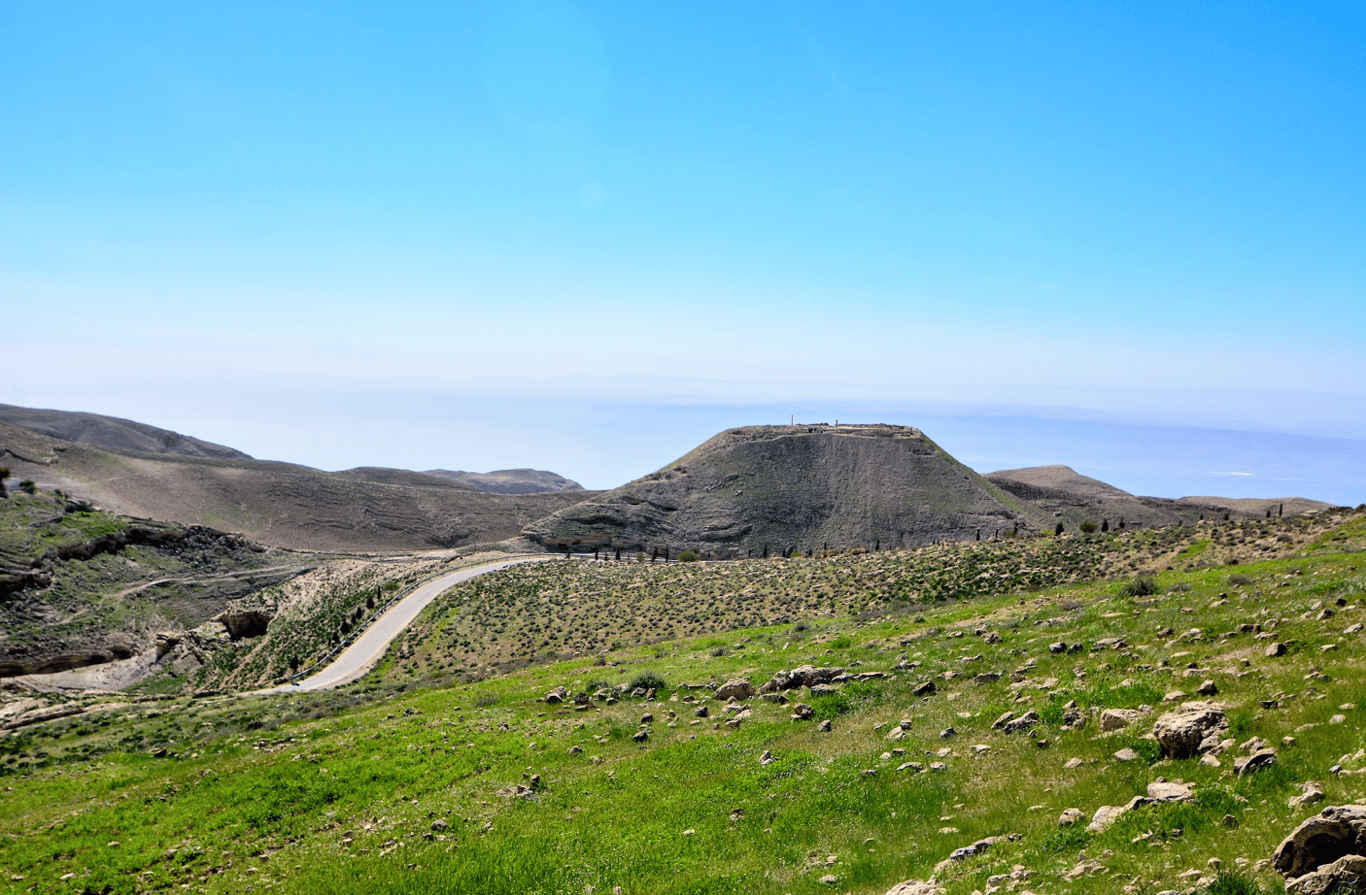
Today, Mukawir consists of extensive stone ruins and architectural remains situated on a suspended hilltop overlooking the Dead Sea region and the hills of Jerusalem. In Christianity, the location of Mukawir is believed to be the place that Herod imprisoned and beheaded John the Baptist following Salome’s fateful dance of the seven veils. Matthew 14:8 states: “Prompted by her mother, she said, 'Give me here on a platter the head of John the Baptist.’”
Mukawir's ancient palace ruins include a dungeon where some archeologists believe John the Baptist was imprisoned before his execution. It is also one of the designated pilgrimage sites for many Christian believers. The site is filled with immense history and religious significance, allowing visitors to imagine biblical stories and times.
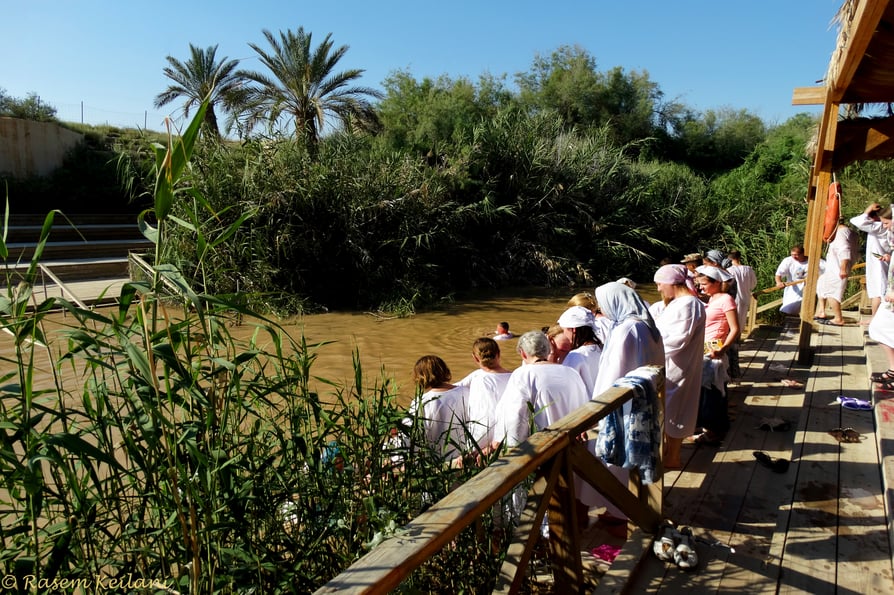
(Baptism at Bethany Beyond the Jordan)
Bethany Beyond the Jordan, Jesus Christ’s Baptism Site is situated in a tranquil environment south of Jordan’s capital city of Amman and near the Dead Sea. The Baptism Site, also referred to as Al-Maghtas, meaning “baptism” or “immersion” in Arabic, is the site where John the Baptist is believed to have baptized Jesus Christ in the Jordan River. Additionally, the Baptism Site is where John the Baptist began his public ministry and is believed to have regularly performed various baptism ceremonies throughout history. Matthew 3:13-15 states the following: “Jesus came from Galilee. He went to John at the Jordan River to be baptized by him. John tried to stop Him. He said, “I need to be baptized by You. Do You come to me?” Jesus said to him, “Let it be done now. We should do what is right.”
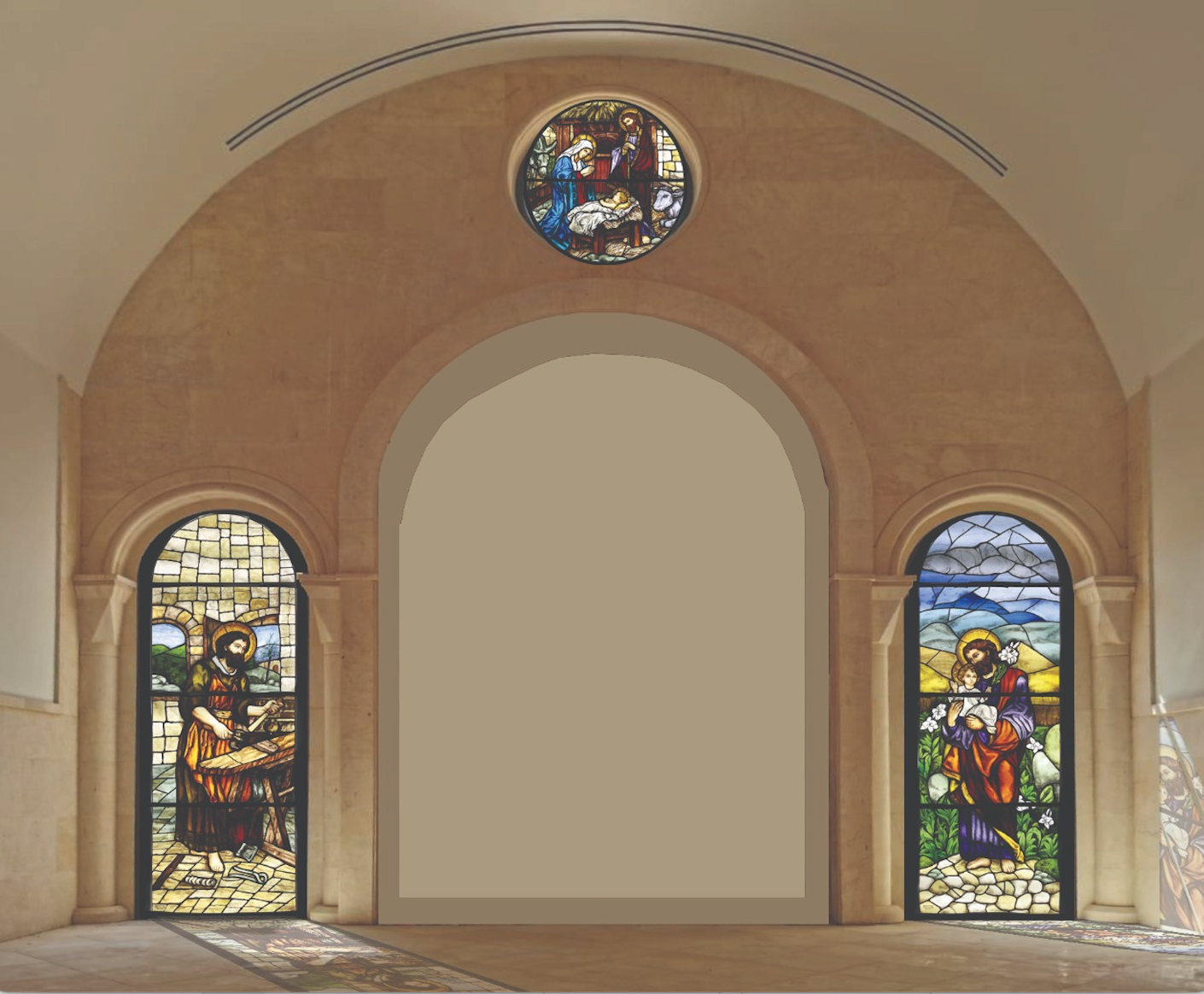
(New Catholic Church being built in Bethany Beyond the Jordan)
Moreover, near the Baptism Site sits Jabal Mar-Elias, or Elijah’s Hill, which is believed to be the place where the prophet Elijah ascended to heaven, adding further significance to the location. In the holy Bible, verse 2 Kings 2 explains the story when Elijah ascended to heaven and specifically states, “And it came to pass, when the Lord was about to take up Elijah into heaven by a whirlwind, that Elijah went with Elisha from Gilgal.”
Mukawir and Bethany Beyond the Jordan are two sacred sites in the kingdom that are filled with biblical and historic importance, providing visitors with a unique opportunity to experience these places.

Leen Hajjar, born and raised in Amman, is JTBNA's blog editor. A recent graduate from Villanova University with a master's degree in Communication, Leen focuses on media analysis, specifically mainstream media’s portrayal of Arabs and the Middle East. Her previous experience as a writer for Al Arabiya English, inspired stories that shed light on the diverse and positive attributes of the Arab world, aiming to provide a more comprehensive representation of the region and its people.
Related Posts
Social wall #visitjordan.
1. Snap the best shot in #Jordan 2. Upload it to your Instagram 3. Tag us, or use the hashtags #VisitJordan #ShareYourJordan for a chance to be featured! 📸😃 #Amman Photo Credit @mdecoster66
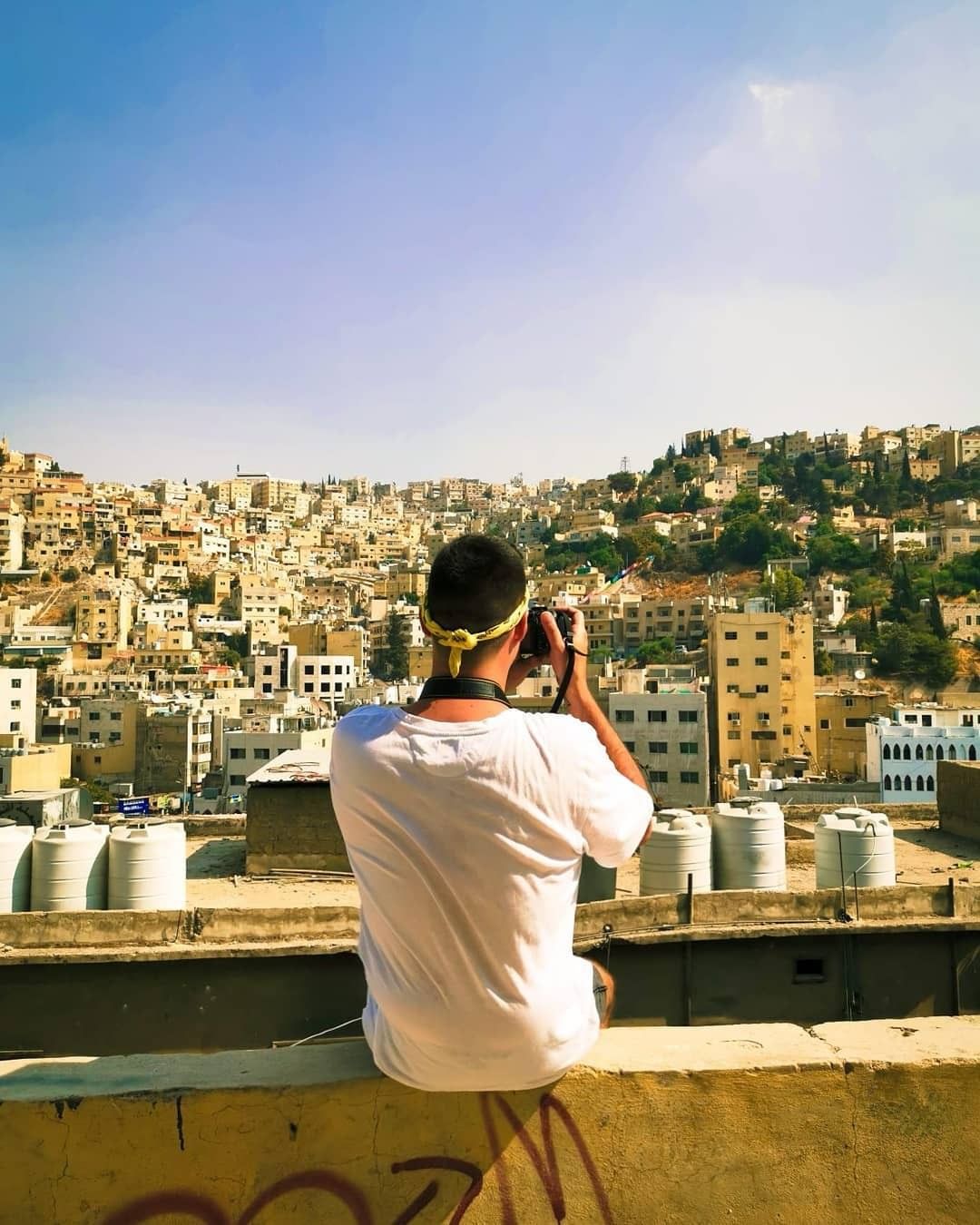
#VisitJordan #ShareYourJordan #Amman Photo Credit @travelerslenss
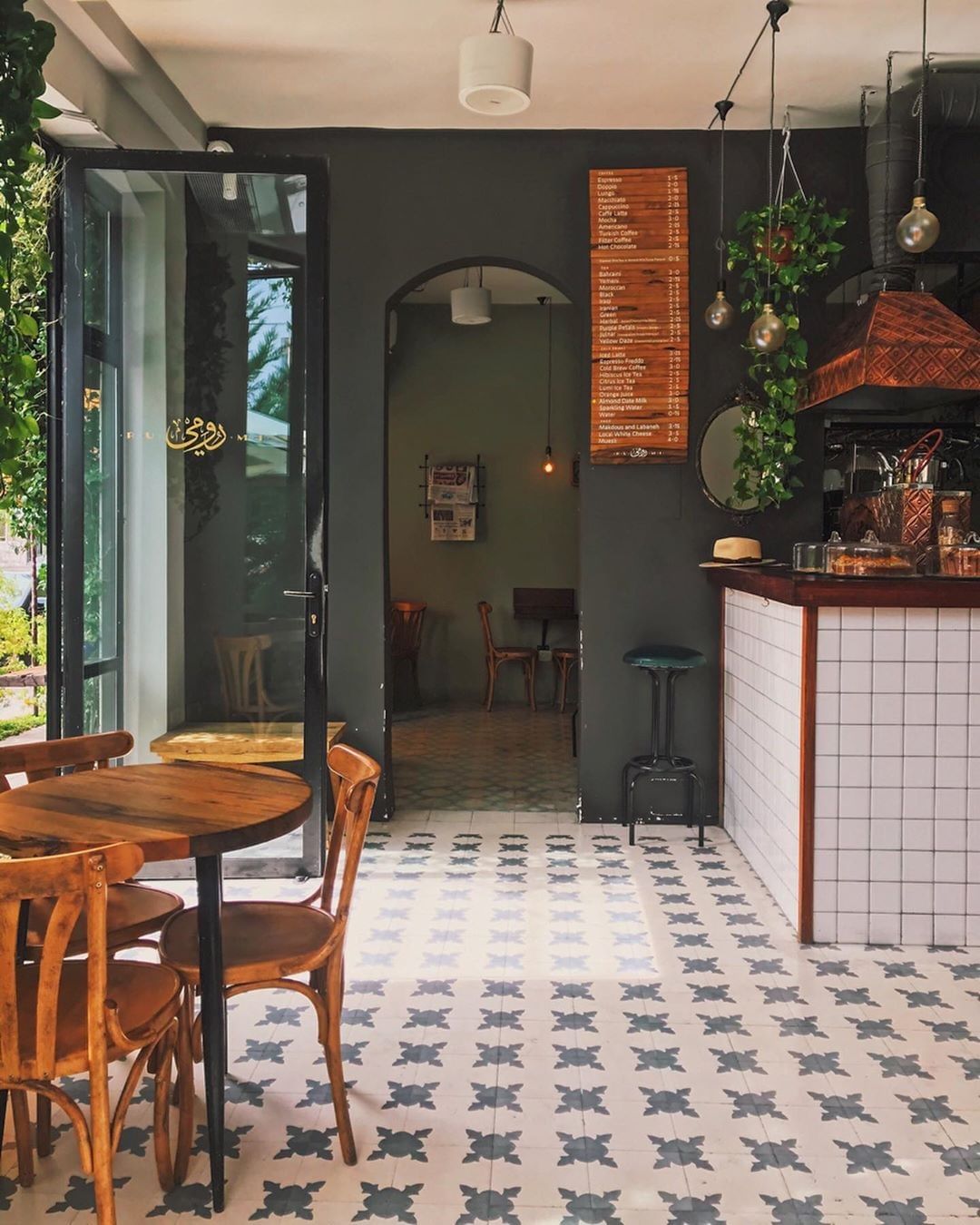
'Our pictures are our footprints. It's the best way to tell people we were here' -Joe McNally #VisitJordan #ShareYourJordan #WadiRum Photo Credit @mariambeirouty
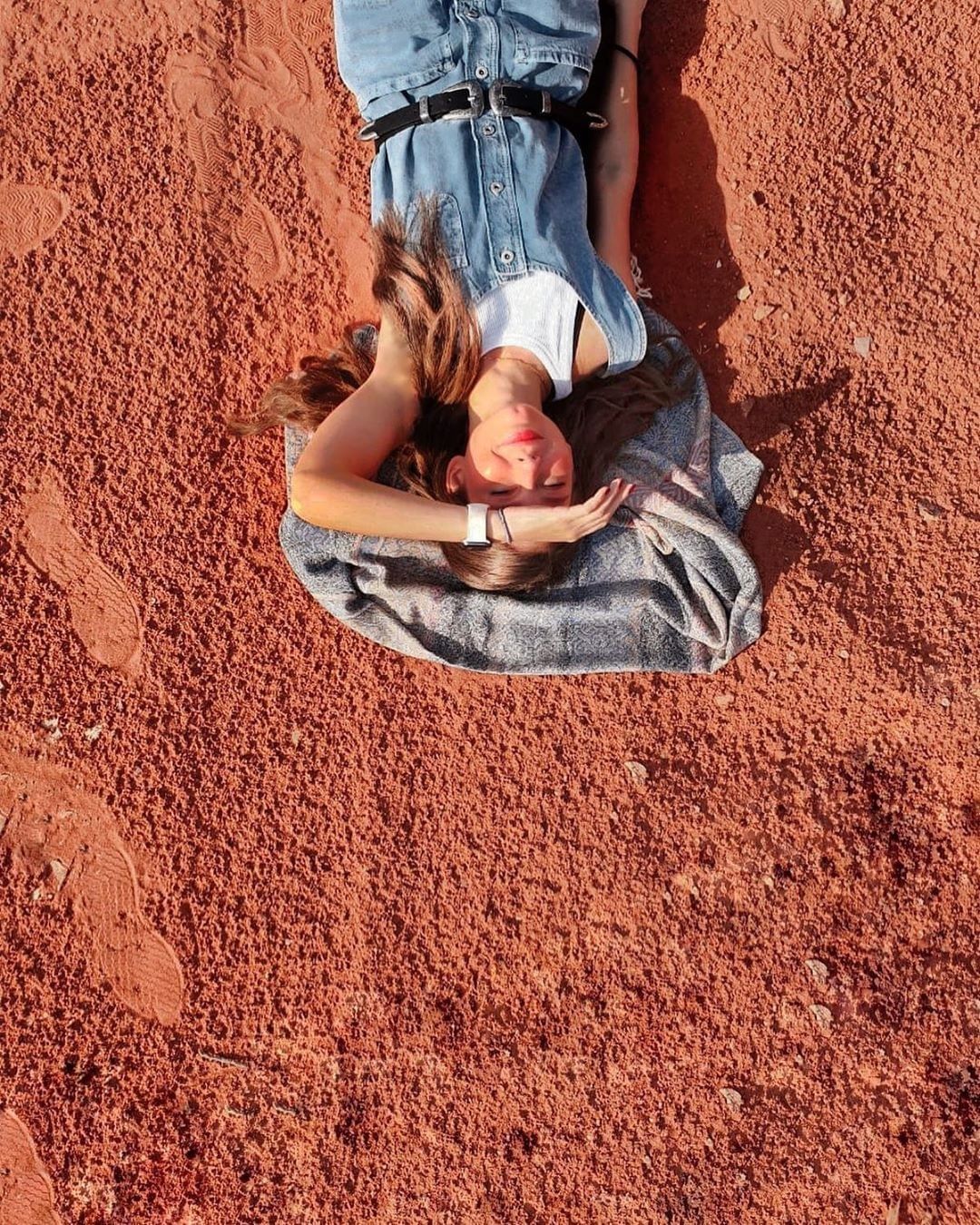
The road to the land of healing powers is this way, follow us! 😉 #VisitJordan #ShareYourJordan #DeadSea Photo Credit @manasnomapa
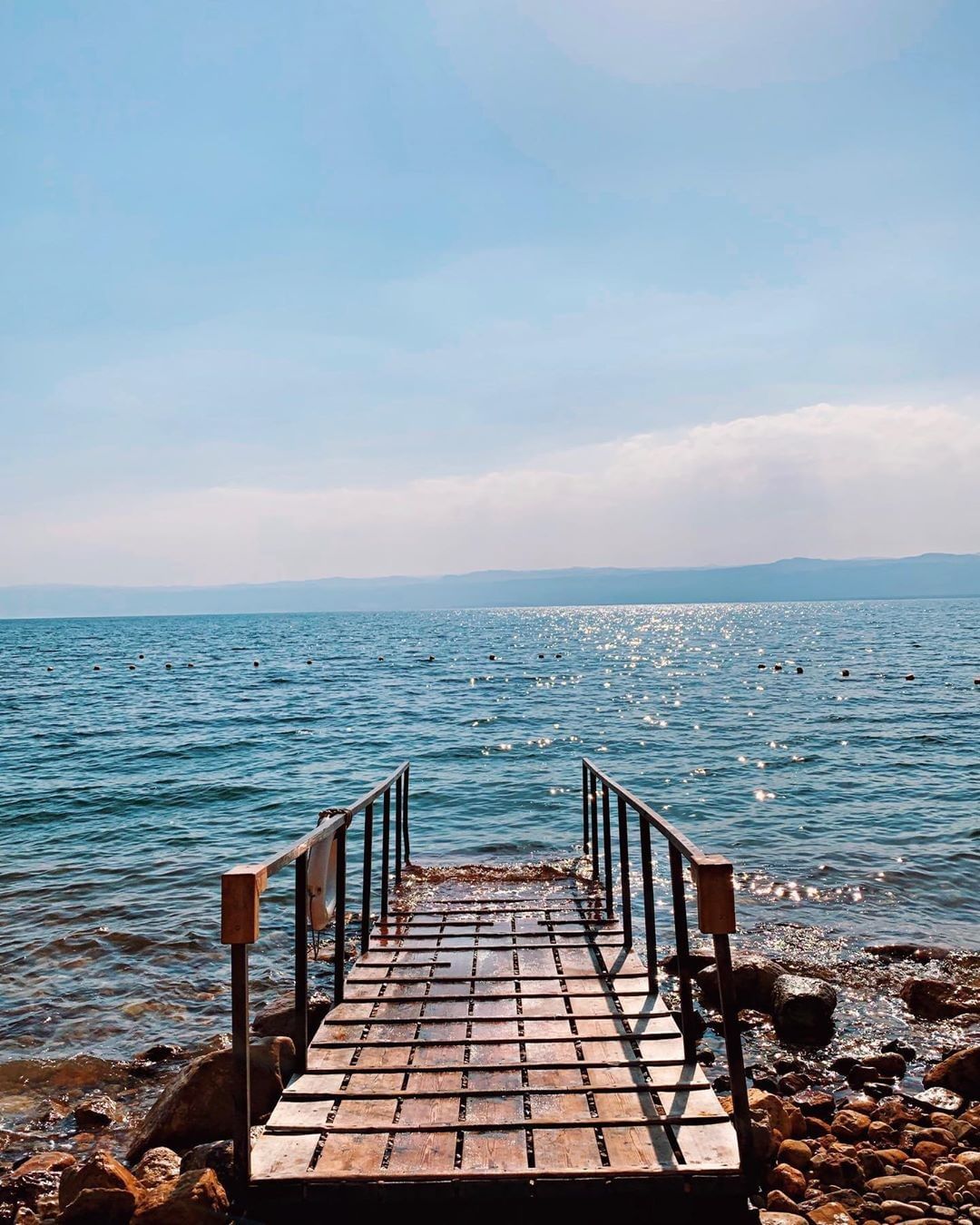
She was more like a beauty queen from a movie scene #Treasury 😍🎥 #VisitJordan #ShareYourJordan #Petra Photo Credit @tsapeta
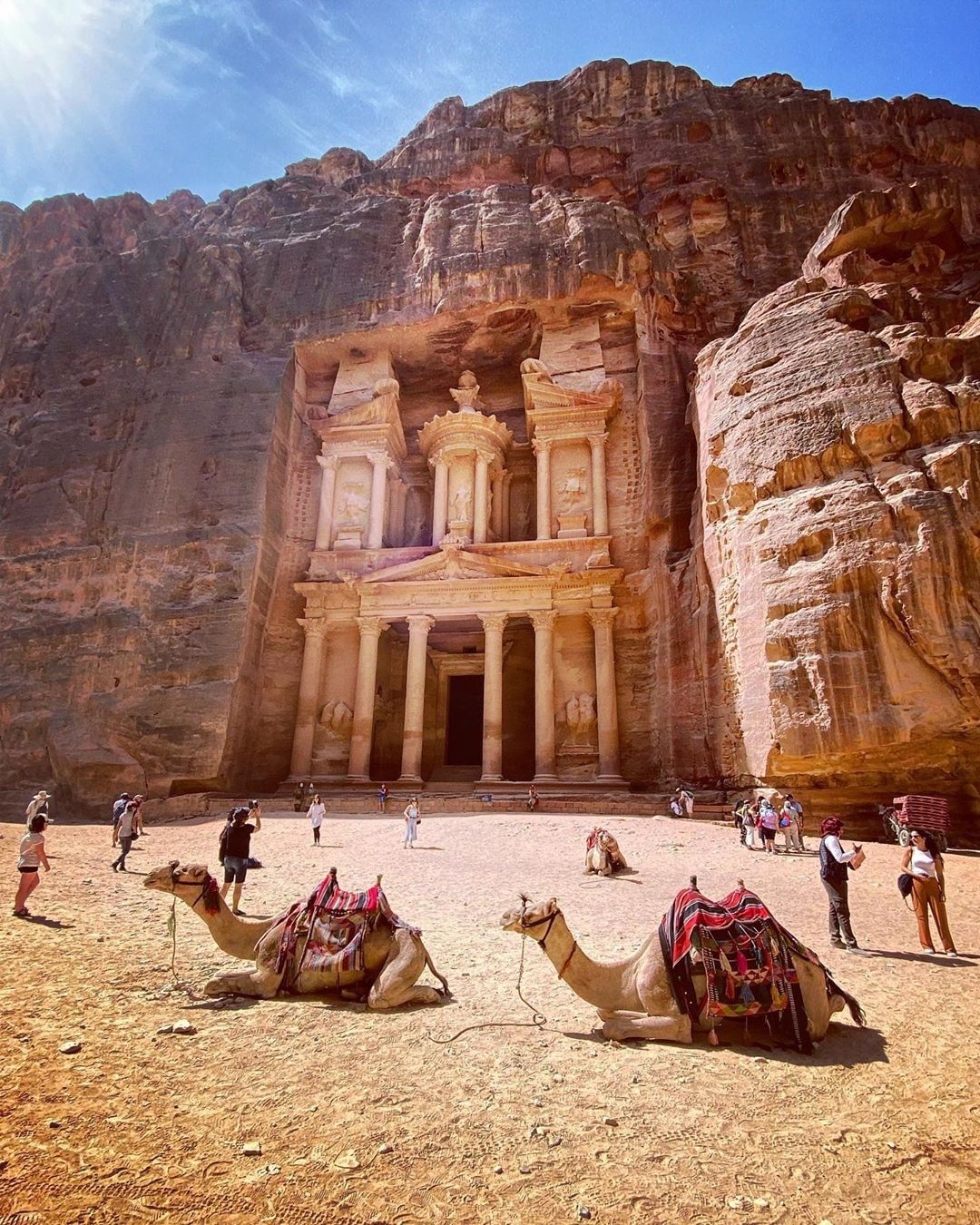
Good morning from beautiful Mai'n Hot Springs 💛💙
#VisitJordan #ShareYourJordan #MainHotSprings Photo Credit @giothewanderluster
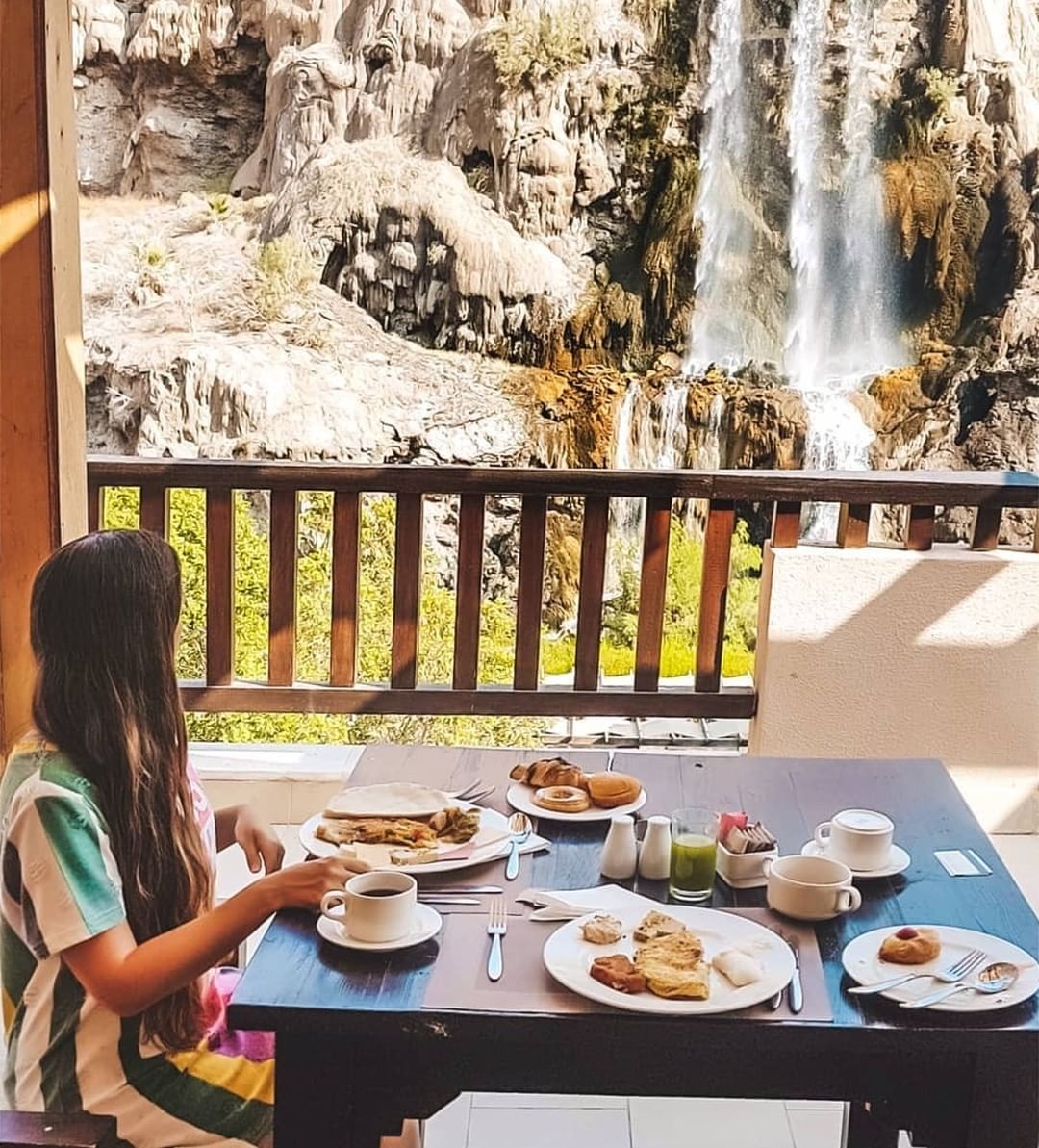
When was the last time you visited the #DeadSea ? #VisitJordan #ShareYourJordan Photo Credit @franci_temp_87
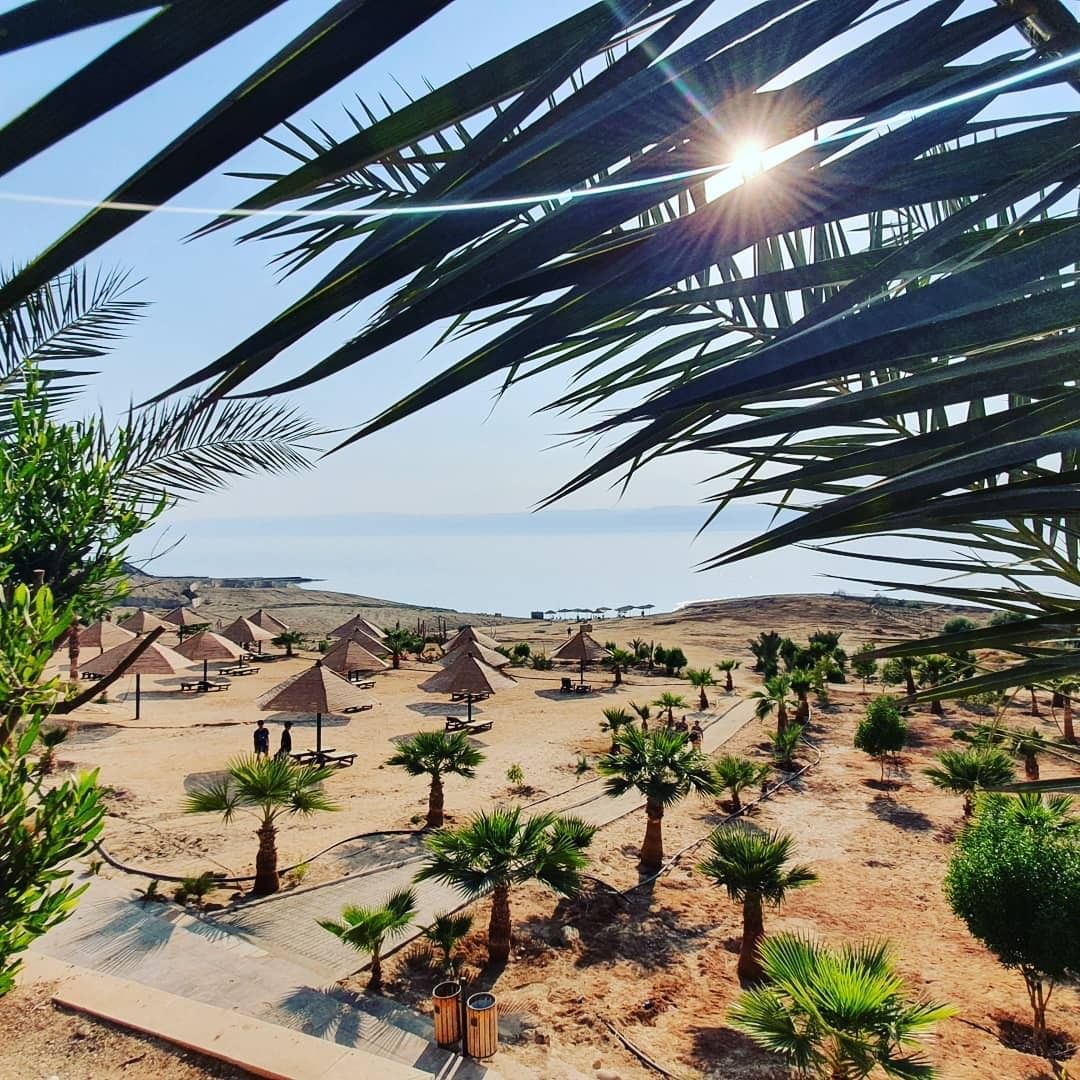
The cherry on top 🍒 #VisitJordan #ShareYourJordan #Amman Photo Credit @who.sane
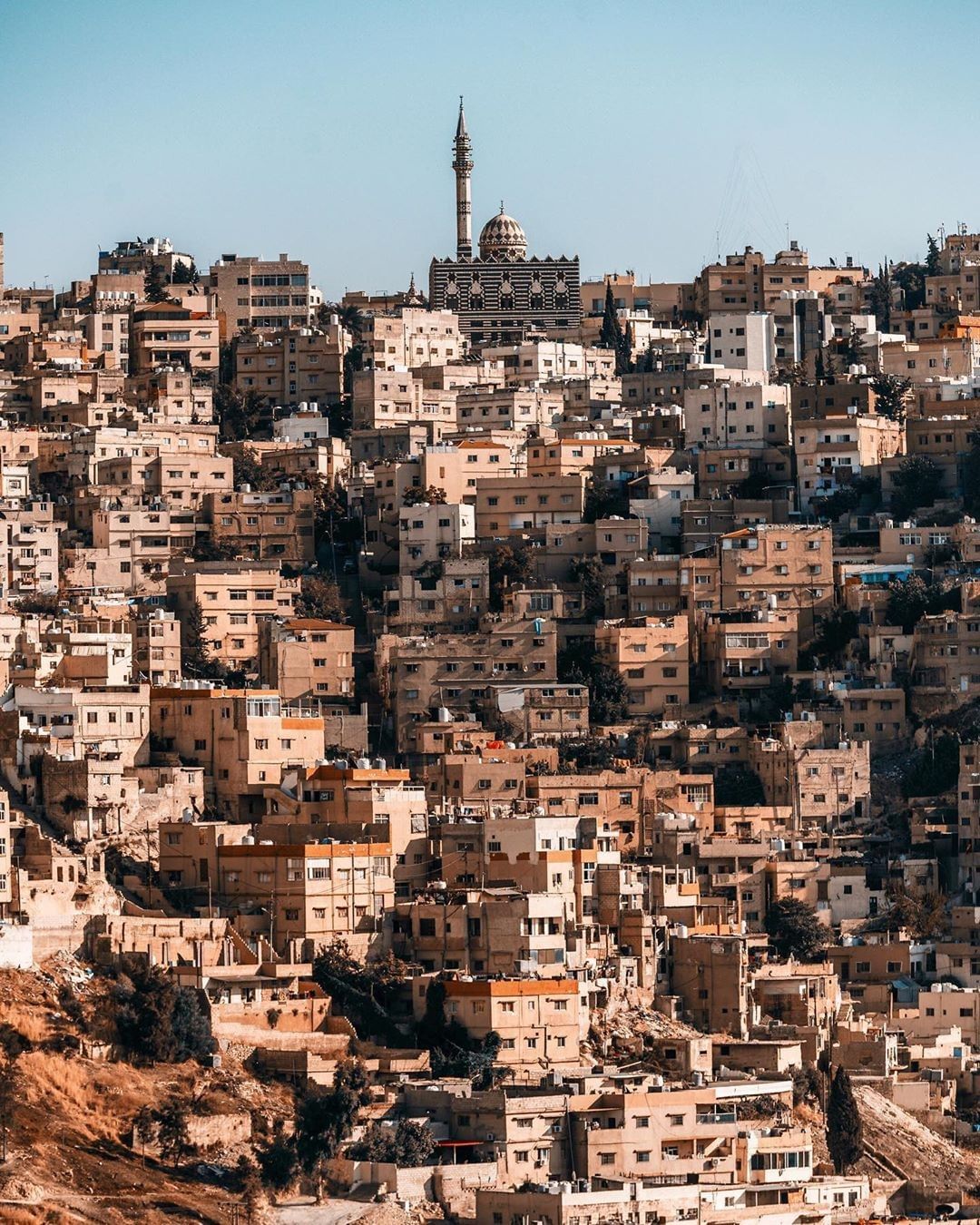
May 16, 2023
Experience Wellness and Spirituality in Jordan
May 2, 2023
Experience Southern Jordan
April 25, 2023
3 Days of History and Religion in Amman
Subscribe to our blog, my jordan journal.

Want Updates on Other Experiences? Visit Our General Blog.

101 W. Broad St., Suite 520, Falls Church, VA 22046 Tel: 703-243-7404 [email protected]
PLAN YOUR TRIP
Itineraries
Testimonials
GET SOCIAL WITH US
Jordan Tourism Board North America | Copyright 2023. All Rights Reserved

- Holy Jordan
- Meaningful Travel
- History & Culture
- Eco & Nature
- Leisure & Wellness
- Food & Wine
- Getting There
- Travel Guides
- Jordan Travel Deals
- TravelStride Marketplace
- Jordan Pass
- Build My Jordan Journey
- Become a Jordan Specialist
- Trade Resources
- Jordan in the Press
- Press Resources
- Meaningful Travel Map
MY JORDAN JOURNAL STORIES OF ADVENTURE, CULTURE, AND FAITH IN JORDAN
5 Holy Sites to Visit While in Jordan
Jul 11, 2017 1:00:00 PM
Samer Abu Taleb Samer Abu Taleb -->
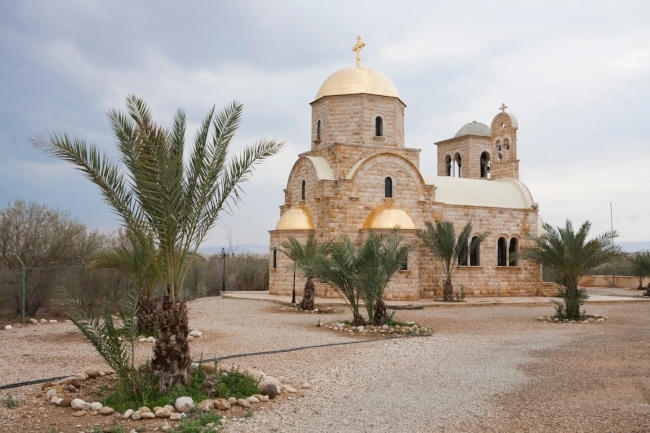
Home of the Holy Land and including some of the world’s oldest Christian communities , Jordan teems with breathtaking sacred sites that attract people from all over the world. From the location where J esus was baptized, according to the Gospel of John, to Herod’s palace, Jordan’s many well-preserved holy sites bring biblical stories to life, preserving ancient history in the landscape and architecture.
Note: If you’re interested in hearing more about the history, culture, and adventure that the country of Jordan has to offer, we invite you to subscribe to our blog — My Jordan Journal — to learn more!
1. Mount Nebo
Mount Nebo is where, according to the Old Testament, Moses saw the land he would never enter. Because this mountain’s connection to the Moses story, it is a prominent place of Christian pilgrimage.
Recent excavations on Mount Nebo have uncovered the remains of a church dating from the 4th century AD, which contains spectacular Byzantine mosaics.
2. Bethany Beyond the Jordan
Also known as Al-Maghtas, Bethany Beyond the Jordan is the site on the eastern bank of the River Jordan where Jesus was to have been baptized by John the Baptist around 29 AD. Nearby is Jabar Mar-Elias, or Elijah’s Hill, believed to be the place where the prophet Elijah ascended to heaven after having stopped the River Jordan’s waters in order to cross over to the eastern side.
The area contains the remains of ancient churches and chapels, as well as pools in which John the Baptist is said to have regularly performed baptisms.
3. Machaerus
Machaerus is a hilltop fortress — purportedly the palace of Herod , King of Judea, during Jesus’s lifetime. This would have been where Salomé danced for Herod’s son, Herod Antipas, and where John the Baptist was later beheaded.
Standing on this hill, visitors can see stunning views of the Dead Sea and the West Bank.
4. Umm Qais
Formerly the city of Gadara, Umm Qais overlooks the Sea of Galilee. This is where Jesus might have performed the Miracle of the Gadarene Swine . One Biblical story states that upon meeting two men who lived in the tombs near the entrance of Gadara and who were possessed by demons, Jesus cast the demons out, channeling them into a herd of pigs. The pigs then ran off a cliff into the Sea of Galilee, where they drowned.
Today, Umm Qays treats its visitors to extraordinary views over the Sea of Galilee, the Yarmouk River, and the Golan Heights.
5. Pella
Pella is a Decapolis city dating back to the Bronze Age where the Bible says that Jacob, brother of Esau, wrestled all night with God in the form of an angel. The angel then deemed Jacob “Israel” because of his strength in battle. Jacob named the city Penuel, meaning “the face of God.”
Recently, a temple was discovered at Pella, which is thought to be the Holy Land’s best-preserved temple from Old Testament times.
Jordan is more than a country to consider traveling for pretty views or interesting cultural experiences: Jordan is home to a variety of sites connected to Biblical stories and thought of as holy in many aspects. These five holy sites are just a few of the many available for exploration and adoration to those willing to travel to the country of Jordan.
If you’re considering traveling to Jordan in hopes of visiting the holy sites there, you should download our Guide to Religion and Faith in Jordan . This guide will help to outline the many holy sites in Jordan and offer advice for how to best plan your journey.
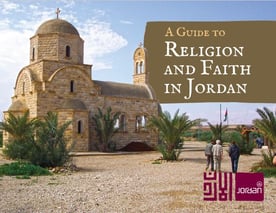
Topics: Holy Jordan
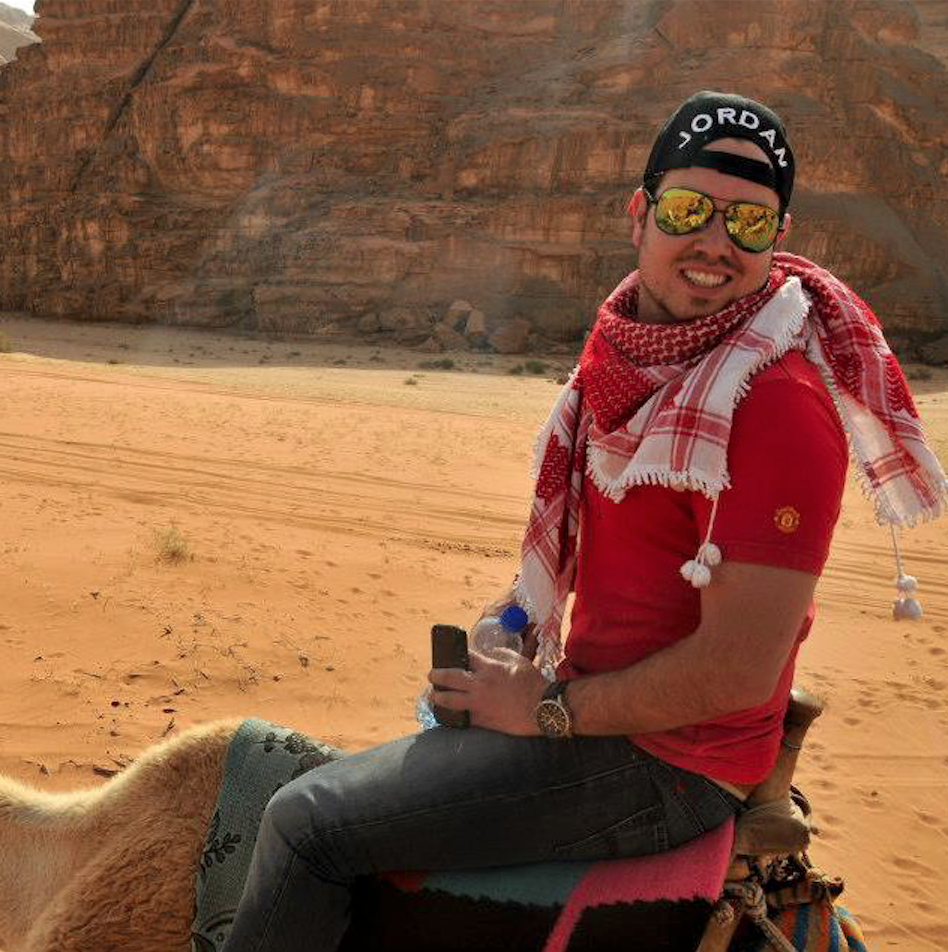
Written by Samer Abu Taleb
Samer manages Jordan Tourism Board's trade partnerships & consumer marketing in both the North American and Latin American markets. Enjoys travel, writing, photography and a big sports fan. Born and raised in Jordan, currently lives in Washington, DC.
Recommended for you
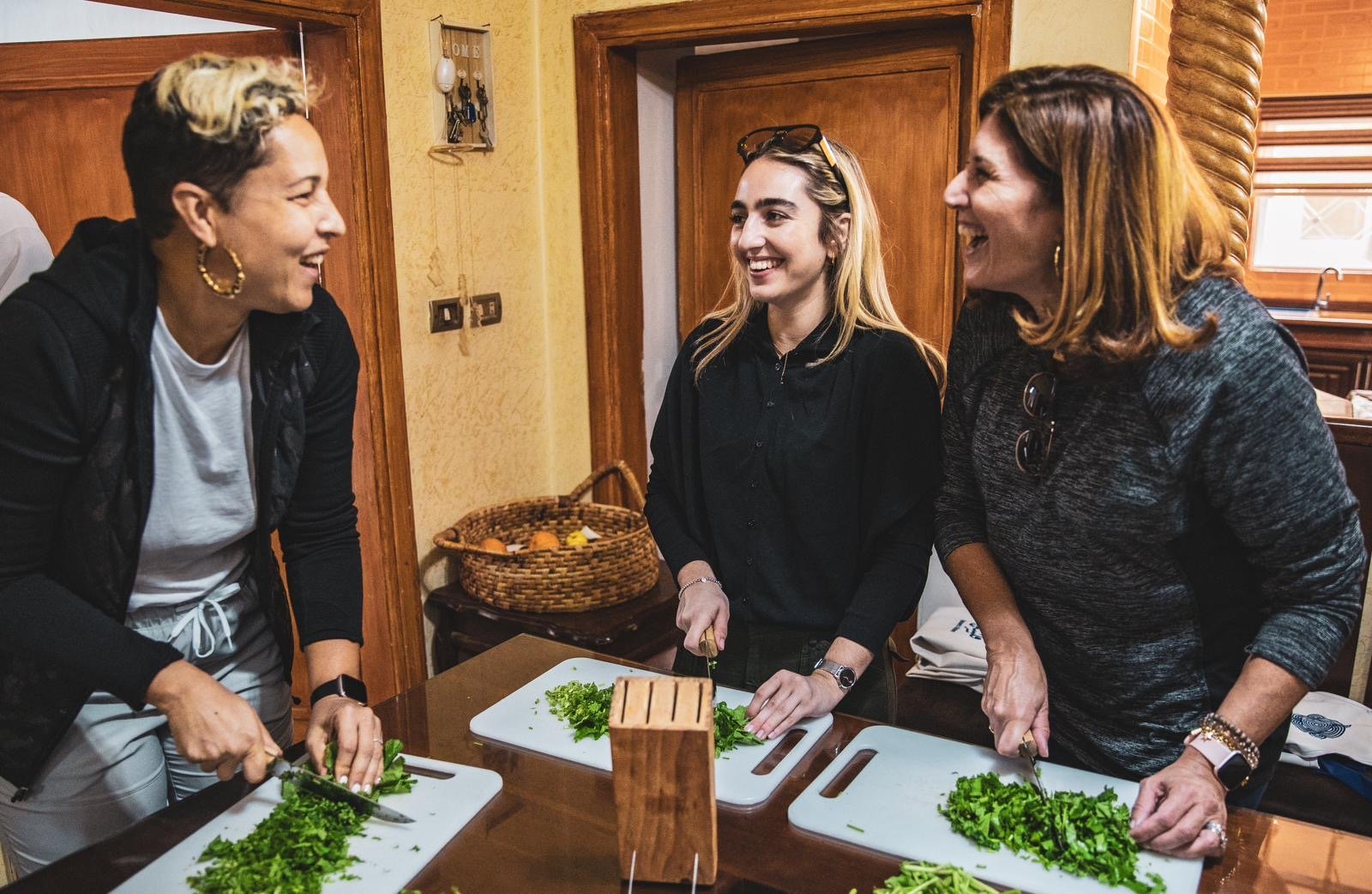
WANT THE LATEST STORIES ON ADVENTURES IN JORDAN? SUBSCRIBE TO MY JORDAN JOURNAL
MOST RECENT POSTS
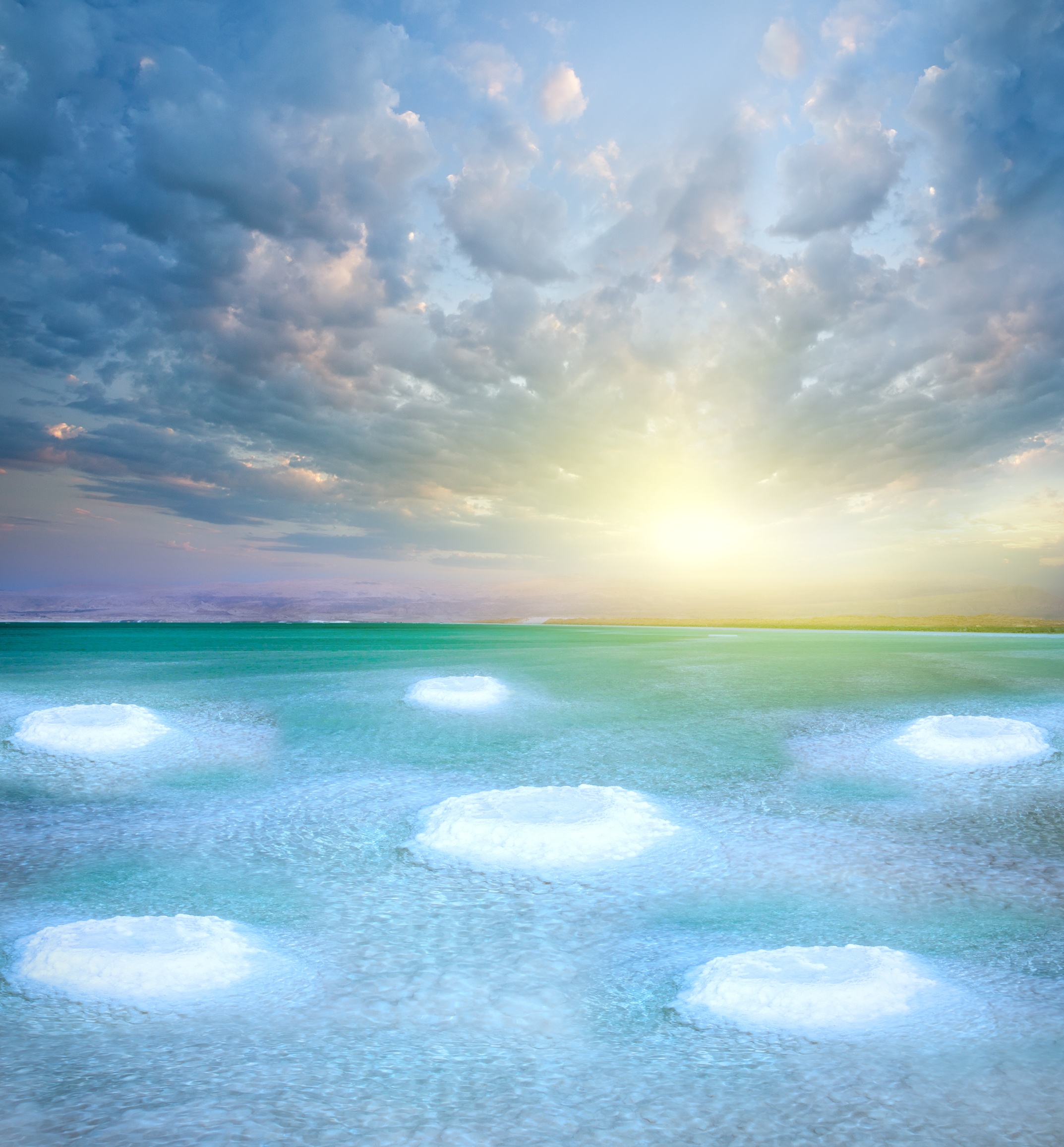
Like Us On Facebook!
My Jordan Journey Tweets!
My Jordan Journal
- Jordan News (70)
- Meaningful Travel (55)
- History, Art & Culture (46)
- Adventure Travel (45)
- Family Travel (33)
- Luxury & Wellness (25)
- Sustainable Tourism (20)
- Jordan Bike Trail (17)
- Amy Bikes Jordan (13)
- Culinary Tourism (12)
- Recent (12)
- Holy Jordan (10)
- Travel Trade News (10)
- Featured (5)
Andrew Evans Blog
- Adventure Travel (8)
- VisitJordan.com
- VisitaJordania.com.mx
Media Center
- Multimedia Gallery
- AdventureNEXT Near East
Plan your Trip
- Itineraries
- Testimonials
1420 Beverly Road, Suite 203 McLean, VA 22101
703-243-7404
1307 Dolley Madison Blvd., Suite 2A McLean, VA 22101

National Geographic content straight to your inbox—sign up for our popular newsletters here

A man walks past the King Abdullah I Mosque in Amman, Jordan.
How to Visit Religious Sites in Jordan
Jordanians take great pride in being religiously tolerant and culturally open, so many of the country's mosques are open to travelers. Here's how to ensure your visit is meaningful and respectful.
The kingdom and people of Jordan take great pride in their culture of religious tolerance, codified by the Amman Message , which states that “Islam honors every human being,” regardless of color, race, or religion.
To that end, non-Muslims are welcome at many mosques in Jordan. Use the visitor entrance and purchase a ticket before entering the exquisite, blue-domed King Abdullah I Mosque in Amman. Remove your shoes and leave them at the doorway. Remember that this is a place of worship; there are separate areas for men and women.
Related: See the Most Exquisite Mosques Around the World

“We politely ask all women to wear a scarf on their heads,” explains Hitham Jannoun, imam of the Al Sharif Al Hussein bin Ali Mosque in Aqaba, built in 1975. “And we prefer visitors in the afternoon, outside of prayer time, from 4:30 p.m. until around 9 p.m., though of course you are welcome to watch us pray.”
Worshippers face toward the holy city of Mecca, situated some 700 miles south of Aqaba. Decorations typically include the carved olive wood minbar (pulpit), calligraphic quotes from the Quran, and ornate arabesque designs on the ceiling.
Mosques usually open an hour before each prayer. The adhan , or call to prayer, is chanted five times a day, beginning with Allah akbar (“ God is great”) and continuing with the shahadah , or profession of faith, stating that there is no God but Allah and Muhammad is his prophet.
“Islam, Christianity, and Judaism—we all believe in one God,” explains Imam Jannoun. “We must all work together; it is the only way.”
- Nat Geo Expeditions
FREE BONUS ISSUE
Related topics, you may also like.

See how Muslims celebrate Eid al-Fitr around the world

How do we know when Ramadan starts and ends? It’s up to the moon.

Why Ramadan is the most sacred month in Islamic culture

What you need to know when travelling during Ramadan

This royal city lies in the shadow of Kuala Lumpur
- Environment
- Perpetual Planet
History & Culture
- History & Culture
- Mind, Body, Wonder
- Paid Content
- Terms of Use
- Privacy Policy
- Your US State Privacy Rights
- Children's Online Privacy Policy
- Interest-Based Ads
- About Nielsen Measurement
- Do Not Sell or Share My Personal Information
- Nat Geo Home
- Attend a Live Event
- Book a Trip
- Inspire Your Kids
- Shop Nat Geo
- Visit the D.C. Museum
- Learn About Our Impact
- Support Our Mission
- Advertise With Us
- Customer Service
- Renew Subscription
- Manage Your Subscription
- Work at Nat Geo
- Sign Up for Our Newsletters
- Contribute to Protect the Planet
Copyright © 1996-2015 National Geographic Society Copyright © 2015-2024 National Geographic Partners, LLC. All rights reserved

Why Jordan Tours
Bringing Authentic Jordan to You!

Religious sites in Jordan
Religious tourism in Jordan is known as visiting important and sacred religious sites for the three monotheistic religions, which are Islam, Christianity and Judaism, with the aim of enjoying the spiritual and contemplative atmosphere that enhances faith and increases the religious awareness of the traveler, as Jordan includes a large number of important and sacred religious sites, which include mosques And churches and archaeological sites that are linked to the religious history of the region.
Religious tourism is closely related to cultural tourism in terms of purpose, especially those related to the spiritual aspect of man.
Attractions of religious tourism in Jordan
For centuries, Jordan witnessed notable events in the history of the Islamic, Christian and Jewish religions, and thanks to their religious importance, several sites throughout Jordan have become a destination for tourists from different countries, given that Jordan is a country that seeks to preserve religious coexistence, it works hard to preserve these sites Religious sites should be protected, taken care of, and presented to visitors and pilgrims in the best possible way. The most important of these places are:
First : Islamic holy places in jordan
Muta battle site
Which is considered one of the most important invasions in Islamic history, as it is the first invasion that Muslims waged outside the Arabian Peninsula, as the invasion took place at the site of Al-Mashhad in the city of Mutah in Al-Karak Governorate, in which the Muslims defeated the Romans under the leadership of the great companion Khaled bin Al-Walid, and the shrine that contains the shrines of the three martyrs is about 3 meters away from Mutah km to the south, so that it is located on the road linking Amman, Tafilah, and Ma’an, and it contains a spacious mosque with three green domes and two tall minarets.
Shrine of Prophet Shuaib
The shrine and tomb of the Prophet Shuaib in Jordan is considered among the important archaeological and religious sites for Muslims. This shrine is located in Wadi Shuaib in the Balqa Governorate, and it is believed that the Prophet Shuaib, who was mentioned in the Holy Qur’an, was buried there. The area is about 40 kilometers from the city of Amman, and it is an attraction A tourist destination visited by thousands of visitors every year, including large numbers from Pakistan, Malaysia and Indonesia. Fridays and the month of Ramadan are marked by crowds of visitors in this region, which attracts visits from inside and outside the country.
Cave of sleepe
It is believed that the Cave of Ar-Raqim is the place where the believing boys who fled from the persecuted King Daqianus fortified themselves because of their religion. Despite the difference of opinion about the location of the cave, historical and archaeological evidence indicates that this cave is located in the village of Al-Rajeeb, east of the Jordanian capital, Amman, at a distance of 7 km. Approximately kilometers, and the cave is about 4 kilometers east of the Jordan Television building, and 1.5 kilometers east of the Abu Alanda area.
Christian holy sites in jordan
Sites of Christian pilgrimage in Jordan
Jordan occupies an important place among Christian religious tourism destinations all over the world, as these sites are important for Christian pilgrims and are a great religious and tourist destination in the region.
Baptism site
The baptism of Christ – upon him be peace – is the place where John the Baptist settled in the Jordan Valley, where it is believed to be the place where Jesus was baptized. The site became famous thanks to its mention in the Bible (John 1:28 and 10:40), in addition to its mention in Byzantine and medieval texts. The site is located on the eastern bank of the Jordan River, in the Hashemite Kingdom of Jordan, and it is subject to regular inspection, excavations and restoration operations, in preparation for receiving visitors and pilgrims. Jerusalem.
The baptismal site in the Jordan River is considered one of the oldest religious sites in Jordan, as it is believed that John the Baptist baptized Christ at this site. Between 491-518, the Byzantine Emperor Anastasius built the first church dedicated to St. John the Baptist on the eastern and western banks of the Jordan River, however The church was destroyed by frequent floods and earthquakes, and was rebuilt three times until it collapsed again along with the church built on the docks by a great flood in the sixth or seventh century. Many visitors and pilgrims from all over the world, and it was registered as a world heritage site by UNESCO in 2015, which confirms its cultural and historical importance. The baptism site is located in Balqa Governorate, northwest of the Jordanian capital Amman, and visitors can visit it and learn about its history and culture.
Nebu mountain
Mount Nebo is a high mountain overlooking the Dead Sea, the Jordan River Valley, Jericho, and the distant hills of Jerusalem. This site is considered a sacred place for Christians and Jews, as they see in it the site in which the Prophet Moses saw the holy land of Canaan, which he could not enter, until he died and was buried in Moab. Nebo was a sacred place that the first Christian pilgrims from Jerusalem flocked to, and a small church was built there in the fourth century AD to perpetuate the life of Moses – peace be upon him – and the church was later expanded in the fifth and sixth centuries to become the large church we know today, and the church contains amazing collections of paintings Byzantine mosaics that attracted tourists and visitors to enjoy the stunning views and interesting history.
Mar Elias Church
The site assumed special importance for it because it was considered one of the sites of Christian pilgrimage in Jordan, which was approved by the Vatican as the site of the Baptism which is about 11 km to the north from the Dead Sea, and other sites of Christian pilgrimage in Jordan.
Lady of the Mountain Church
The importance of the shrine of Our Lady of the Mount Church is due to the belief that Jesus Christ, his disciples and the Virgin Mary passed through Anjara in the hills of Gilead and settled in a cave there during a journey between the Lake of Galilee and the cities of the Decapolis beyond the Jordan River and Jerusalem. The cave at Anjara has long been a sacred place for pilgrims and has been commemorated with a new shrine. The cave was also designated by the Catholic Churches of the Middle East as one of the five pilgrimage sites for the year 2000.
Makawer Castle
Makawer Castle is the most important landmark in the site, and it is the place where the Prophet Yahya, peace be upon him (John the Baptist), was imprisoned. It was mentioned in the Bible that Makawer Castle witnessed the tragedy of the beheading of John the Baptist in the year 30 AD by King Herod and his head was presented to Herodias, the mother of the dancer Salome. This was during a big celebration held in the castle on the king’s birthday.
As for the village of Makawer itself, it is built on the ruins of the archaeological site, as it contains many Byzantine churches, the most important of which is Malachios Church, which is located within the heritage houses spread in the village.
Cave of Christ
Al-Maasara Cave, or the Cave of Christ, is located to the west of the town of Beit Idis in Irbid Governorate, amidst beautiful natural scenes interspersed with omissions of wheat, barley, and perennial oak trees.
According to what was mentioned in one of the old books, the Prophet of God Jesus hid in the cave for forty days, and near the cave there is an ancient church that is said to be one of the oldest churches in the world, and it has a wonderful mosaic floor that was restored by the Ministry of Tourism and Antiquities.
It is recommended to visit the area at the end of winter and during the spring when it is at its most beautiful.
The area is dotted with black iris flowers, and beautiful wild lupine flowers with their distinctive violet color.
Jewish holy sites in Jordan:
Mount Nebo:
According to the Jewish story , the prophet Moses and the Israelites who followed him reached Mount Nebo, located in the hills overlooking the Dead Sea on the Jordanian side. Then Moses was denied entry into the Promised Land, he was able to view it from here in the 13 th century BCE.
Muse’s vally and Aaron’s tomb:
Wadi Musa surrounds the Jordanian city of Petra, which is considered one of the most important tourist places in Jordan
The reson behind naming this region by this name is that the Prophet of God, Moses, resided there for some time and was aware of the approaching end of his life, so he took a stone from which 12 springs were flowing and fixed it in the mountains of that region to produce 12 springs again. Then it turned into 12 villages and each of the tribes had a village. Especially for him, and after the death of Moses, the stone remained in place, receiving thousands of visits annually from tourists from all over the world.
And it is near from the place which commonly believed to be the burial place of Aaron.
Jordan is the land of prophets and monotheistic religions. Whatever your religion, you are welcome here.
What are the top 3 religions in Jordan?
Islam is the relegion of 92% of Jordanians and about 8% are Christians. The majority of Christians belong to Orthodox Church; but there are also Catholics thier.
What is the famous temple in Jordan?
The most famous temple of jordan isThe Great Temple Compex , it is one of the principal sites of ancient Petra. The Great Temple was constructed around the first century BC, making it over 2000 years old. It is one of the most important archaeological and architectural sites in Petra.
Is Petra Jordan a religious site?
Yes, it consider as relegious place as it was part of the route that Moses took on his Exodus journey, which is referred to as ‘Moses Valley’ , and it is commonly believed to be the burial place of Aaron.
Share this:
Leave a reply cancel reply.
Blog at WordPress.com.
Discover more from Why Jordan Tours
Subscribe now to keep reading and get access to the full archive.
Type your email…
Continue reading
- Attractions
Madaba is a combination of rural home life and a hot spot for religious tourism. Known as the “City of Mosaics”, Madaba is the cultural epicenter for Byzantine and Umayyad mosaics. Just a short distance from the capital, visitors are just a stone's throw away from the holy monuments of religious iconography.
- Accommodation
- How To Get There
- History & Culture
- Eco & Adventure
- Leisure & Wellness
- Religion & Faith
- Meaningful Trips
- The Jordan Trail
Mount Nebo is the highest point in the ancient Kingdom of Moab, referenced in Abrahamic texts as the site of Mount Nebo this township was first inhabited by a Christian nomadic tribe in the 4th century. Explore your religious roots in the religious town or visit Mt. Nebo where it is believed that Moses died as he viewed the Holy Land. "And Moses went up from the plains of Moab to Mount Nebo, the top of Pisgah, which is opposite Jericho." (Deuteronomy 34:1).
On a clear day there is a magnificent panoramic view over the Dead Sea and the Jordan Valley with the towers of Jerusalem visible on the skyline.
Contact information/ how to book: Madaba Archeological Directorate: Telephone: 00962 6 464 4320
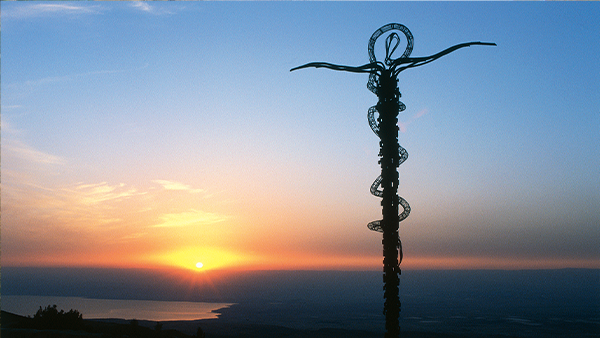
Beit Al Beiruti
Beit Al Bieruti is distinguished by its ancient architectural style, as it is a heritage house built back a hundred ago, and through the tourists experience in Beit Al Beiruti, they will enjoy unparalleled tourism experiences, as it is an arts and crafts store, in addition, It is full of interactive activities, including educational and entertainment activities. Providing local Experiences as a part Ecotourism definition, as a ‘responsible travel that conserves the environment and improves the well-being of local people’. Cultural and Heritage experiences benefit local communities and destinations culturally and economically and it is about uniting conservation, communities, and sustainable travel. This could be considered as the competitive advantage of Al Bieruti For more information click here .
Machaerus / Mukawir
Dramatically situated in the hills south-west of Madaba, and overlooking the Dead Sea the fortress of Machaerus lies near the village of Mukawir traditionally associated with the imprisonment and execution of John the Baptist.
An earlier fortress was built there by the Hasmonaean ruler Alexander Jannaeus (103-76 BC) to defend his eastern territory of Peraea against the Nabataeans. So impregnable was it thought to be that Jannaeus’ widow and heir, Alexandra, stored her treasure there, but the site proved not to be inviolable — in 57 BC, ten years after Alexandra’s death, when the region had descended into civil war between her two sons, the Romans asserted control and seized this strategic fortress, virtually demolishing it in the process.
In 37 BC the Roman senate proclaimed Herod (later called ‘the Great’) king over the people and lands of his Hasmonaean predecessors. Machaerus was rebuilt by Herod both as a palatial and secure summer residence and also as a defense against the neighboring Nabataeans.
This area fell to Herod Antipas. Some 30 years later Antipas divorced his wife (a Nabataean princess, daughter of Aretas IV) to marry Herodias, wife of his brother Philip. His rejected wife made her way to Machaerus, then across the nearby border with Nabataea and from there, under the protection of the Nabataean army, she went south to her father’s capital at Petra.
John the Baptist, who had so outspokenly condemned Antipas’ divorce and remarriage, also came to Machaerus – but as a prisoner. It was here that Herodias’ daughter Salome danced and, at the instigation of her mother, demanded the Baptist’s head on a charger.
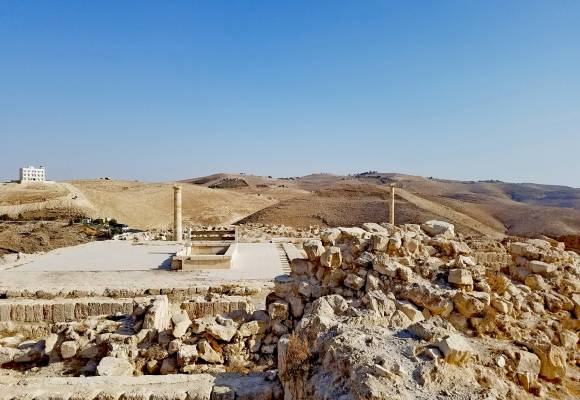
La Storia Museum
Stumble upon the recreation of Jordan’s biblical history at the La Storia Museum in Mount Nebo. Bring religious history to life with sculptures of ethnographic scenes designed to place you in the heart of biblical time.
Contact information/ how to book: Telephone: 00962 5 324 1119
Madaba Visitors’ Center
Nestled into a renovated house from the 19th century the Madaba Visitors Center is an attraction all on its own. Acquired by The Ministry of Tourism and Antiquities, the center is a great launching point for visitors arriving to Madaba. Open 7 days a week, including holidays, the visitors center is more than equipped to prepare you for your journey into the land of mosaics and religious history.
Contact information/ how to book: Telephone: 00962 5 3253097
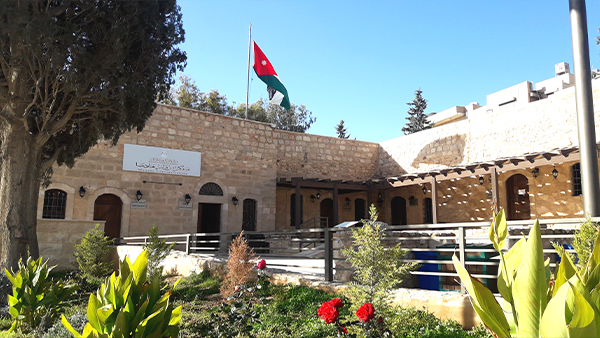
Madaba Institute for Mosaic Art
Certified in training artists in the restoration of mosaics, the Madaba Institute for Mosaic Art offers a two-year diploma program for the vocational training of mosaic restoration.
Contact information/ how to book: Telephone: 00962 5 324 0723

Archeological Park and Burnt Palace
The Madaba Archaeological Park, built in 1991 AD near the Madaba Visitors Center, consists from ancient archeological groups such as the Roman Road, Hippolytus Hall, Church of Prophet Elias, Crypt of Saint Elianos, Church of the Virgin Mary and the Mosaic Exhibition. The ancient Roman Road separates the city and leads to the gates of its ancient walls. This road is characterized by its cobbled stones and its surrounding columns dating back to the Byzantine and Roman periods.
Contact information/ how to book: Madaba Visitors’ Center: Telephone: 00962 5 3253097
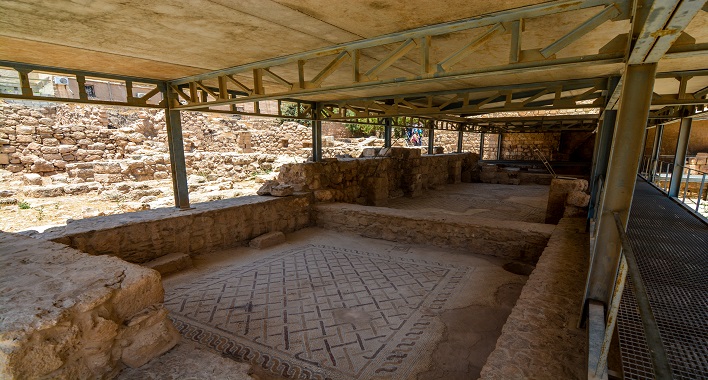
Tourist Street
While visiting Madaba stop by Hussein bin Ali St or “The Tourist Street” to purchase handicrafts and products specific to the mosaics and religious iconography found in Madaba.
Umm Ar-Rasas
With most of the city now in ruins, Umm ar-Rasas, originally inhabited by the Romans to protect trade routes from the Arabian Peninsula to the Levant, is now an archeological site perfect for those who love history. Listed on the UNESCO World Heritage list in 2004 because of its diverse Roman and Islamic influences, this site is sure to please.
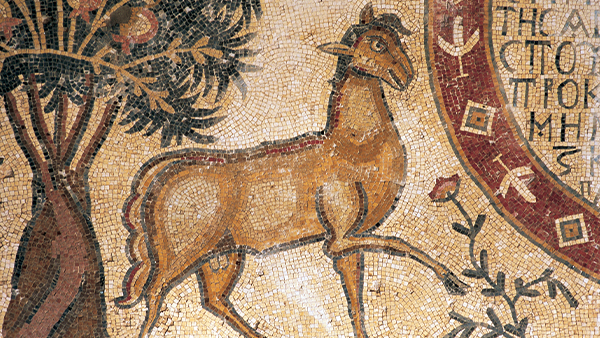
Experiences From Travellers


Religious Tourism
Jordan is a distinct destination for cultural and religious enrichment. There are many holy places spread across Jordan. Five sites were recognised as Christian pilgrimage sites by the Vatican in the year 2000, including the Baptism site of Jesus Christ at Bethany Beyond the Jordan in the Jordan Valley. It is among the most popular religious sites in Jordan. The other Christian pilgrimage sites in Jordan are Mukawir, Tall Mar Elia and Anjara.
Mount Nebo, in the city of Madaba south-west of Amman, is another pilgrimage venue. It is where Moses stood and viewed the Holy Land that he would never enter.
The city of Al-Salt, 20 kilometres northwest of Amman, has shrines of Jacob’s sons Jad and Asher, as well as the shrine of Jethro (father-in-law of Moses).
Other religious sites include the shrines of several of Prophet Muhammad’s companions like Ja`far bin Abi Talib, Zaid ibn Haritha, Abu Ubaidah Amer bin Al Jarrah, Sharhabeel bin Hasanah, Bilal ibn Rabah, Abdul Rahman ibn Auf and Muaz ibn Jabal, who were buried in different parts of Jordan.
Jordan was also the site of a number of important battles in Islamic history, including the battle of Mutah (south of Jordan) and the battle of Yarmouk (north of Jordan).
Among many other sites, The Cave of the Seven Sleepers (Kahf Al-Raqim), which is mentioned in the holy Quran, is a 10-minute drive east of Amman in the town of Al Rajib.
Kahf al-Raqim (The Cave of the Seven Sleepers)
The Complex of Shrine of Zaid ibn Haritha
The Mosque Complex of Abu Ubaidah Amer bin Al Jarrah
- Arts & Culture
Get Involved

Autumn 2023

Exhibition Opening: Louder than Hearts, Women Photographers from the Arab World and Iran

Annual Gala Dinner

Internships
Pilgrims and profits: Jordan looks to holy baptism site to boost religious tourism
Rana F. Sweis
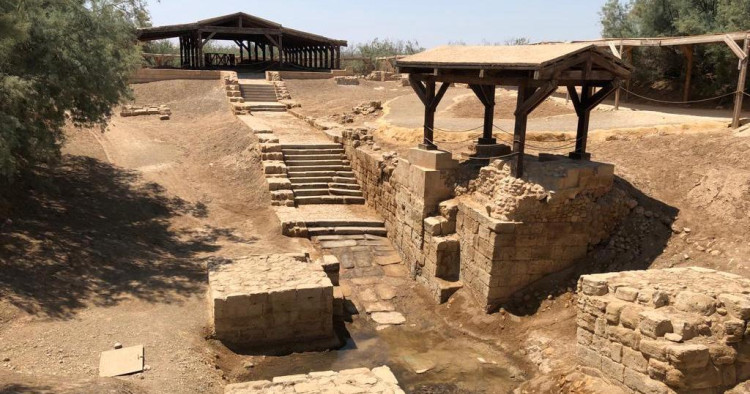
The Bethany Beyond the Jordan baptism site, where Jesus of Nazareth is believed to have been baptized by John the Baptist, is adorned with bright green acacia trees known for withstanding intense heat. Also scattered throughout the area, nine kilometers north of the Dead Sea in the Jordan Valley, are feathery tamarisk plants with needle-like leaves. These shrubs hold biblical significance: According to the Bible, they were planted by Abraham, sought for solace by Saul, and provided rest for fallen warriors. To this day, these plants, along with trees and thickets of reeds, permeate the landscape, creating a striking contrast against the vast and barren desert.
In early June this year, tourists and pilgrims, led by a guide, walked in groups, pausing at the baptism site to observe the distant pillars and faded mosaics. Before reaching the river, the group visited a small Greek Orthodox church with intricate murals and aqua-blue stained glass windows. Spanish tourists, dressed in white gowns, immersed themselves in the Jordan River (now much reduced), reenacting biblical scenes while being observed by Jordanian soldiers.

An elderly woman stared at the river; her emotions overwhelmed her as tears streamed down her cheeks. A young Jordanian man from the tour turned to his friends and quietly said, “It is to them what Mecca is to us.”
Archeological discoveries and biblical connections
Formerly filled with thousands of landmines, the area has evolved into a treasure trove of archaeological discoveries. Since the signing of a peace treaty between Jordan and Israel in 1994, extensive excavations have unearthed remnants of churches, baptismal pools, water channels, and caves, emphasizing the historical significance of the region as a pilgrimage site dating back to the 4th century CE.
The location of the actual baptism site remained a mystery until clues, left behind by monks and local inhabitants, were discovered. In 1884, the ruins of an old Byzantine church were cleared in the ancient town of Madaba, southwest of Amman. It was during this excavation that the oldest mosaic map of Jerusalem and the Holy Land was discovered. It contained indications of the site, in present-day Jordan, where Jesus was believed to have been baptized. It has also gained recognition from archaeologists, researchers, popes, and the United Nations.
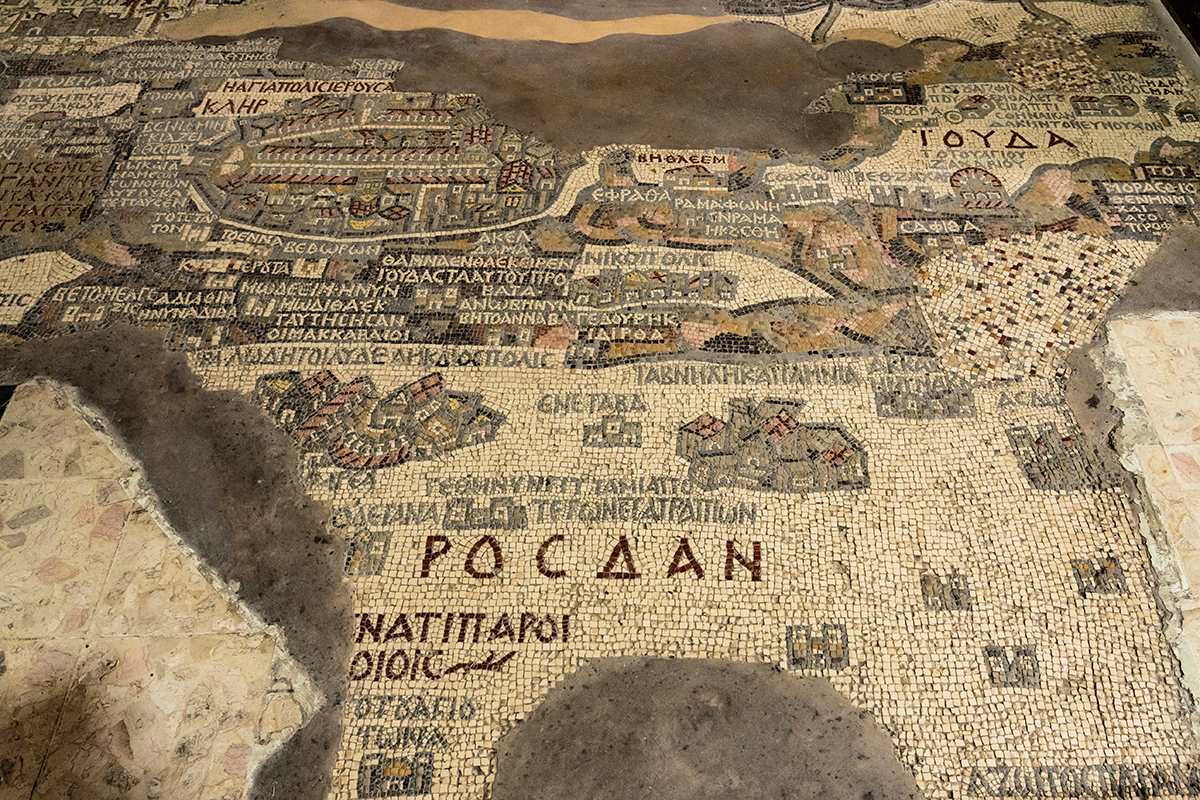
This location, surrounded by ancient pillars and churches that have stood since the 5th century CE, is one of the most sacred Christian sites, along with the Church of the Nativity in Bethlehem and the Church of the Holy Sepulchre in Jerusalem. In 2015, it was designated as a World Heritage Site .
Situated to the east of the river is the Hill of Elijah , a site where religious figures and followers believe Jesus revealed himself to his apostles Peter, James, and John. The area also encompasses the biblical cities of Sodom and Gomorrah . In 1991, a cave was discovered in the hills . It was identified as the ancient site of Zoar, the city where it’s believed Lot and his family took refuge during the destruction of Sodom and Gomorrah. Nine religious organizations will be granted the opportunity to build a place for receiving pilgrims at the baptism site.
Tourism and development efforts
The Jordanian government’s efforts to attract tourists to the baptism site have at times been met with a mixed reception. In 2017, an advertising campaign was launched with the slogan, “For God’s sake, visit.” While the campaign resonated with the Lebanese as a heartfelt appeal, it was viewed as flippant by some Jordanians. More recently, the country’s tourism sector faced another setback due to the enforcement of stringent coronavirus measures, effectively prohibiting visitors.
The tourism sector in Jordan contributes approximately 20% of GDP. In 2019, over 5 million people visited Jordan; during the first quarter of 2023, more than 1.4 million tourists were recorded. According to the Ministry of Tourism , around 85% of visitors to Jordan come for its history and culture, with religious sites like Mt. Nebo and the baptism site ranking just below popular destinations such as Petra, Jerash, and Wadi Rum. Even so, the country faces tough competition in attracting tourists compared to its neighbors, including Israel. More recently, Saudi Arabia is making a major push to develop its tourism sector with the aim of reaching 100 million visitors per year and making tourism its second-largest revenue source by 2030.
The baptism site attracts a diverse range of visitors, with Europeans comprising the majority, followed by 24% from the United States, 7% consisting of Jordanians and visitors from Arab countries, and the remaining 9% coming from Africa and East Asia. With the lifting of travel restrictions in Jordan and elsewhere, a comprehensive marketing campaign by the government targeted Europe and Gulf countries through advertisements in train stations, shopping centers, and online.
Since then, the baptism site has experienced an upsurge in tourist arrivals, including a recent visit by Oprah . She shared a photo of herself with her 22 million Instagram followers, standing on a step of the site that is usually inaccessible to the public. By the end of this year, visitor numbers are expected to reach 200,000, doubling the figures from previous years, including before the pandemic.
All this is now set to change still further. In 2021, the Jordanian government allocated a 338-acre plot adjacent to the baptism site for development. After undergoing multiple drafts, the master plan was recently submitted to UNESCO. “We want to make sure this place is preserved for centuries to come,” said King Abdullah during an interview with CNN in December last year. “I think it [all] started here and it tells the story of Jordan throughout the ages.”
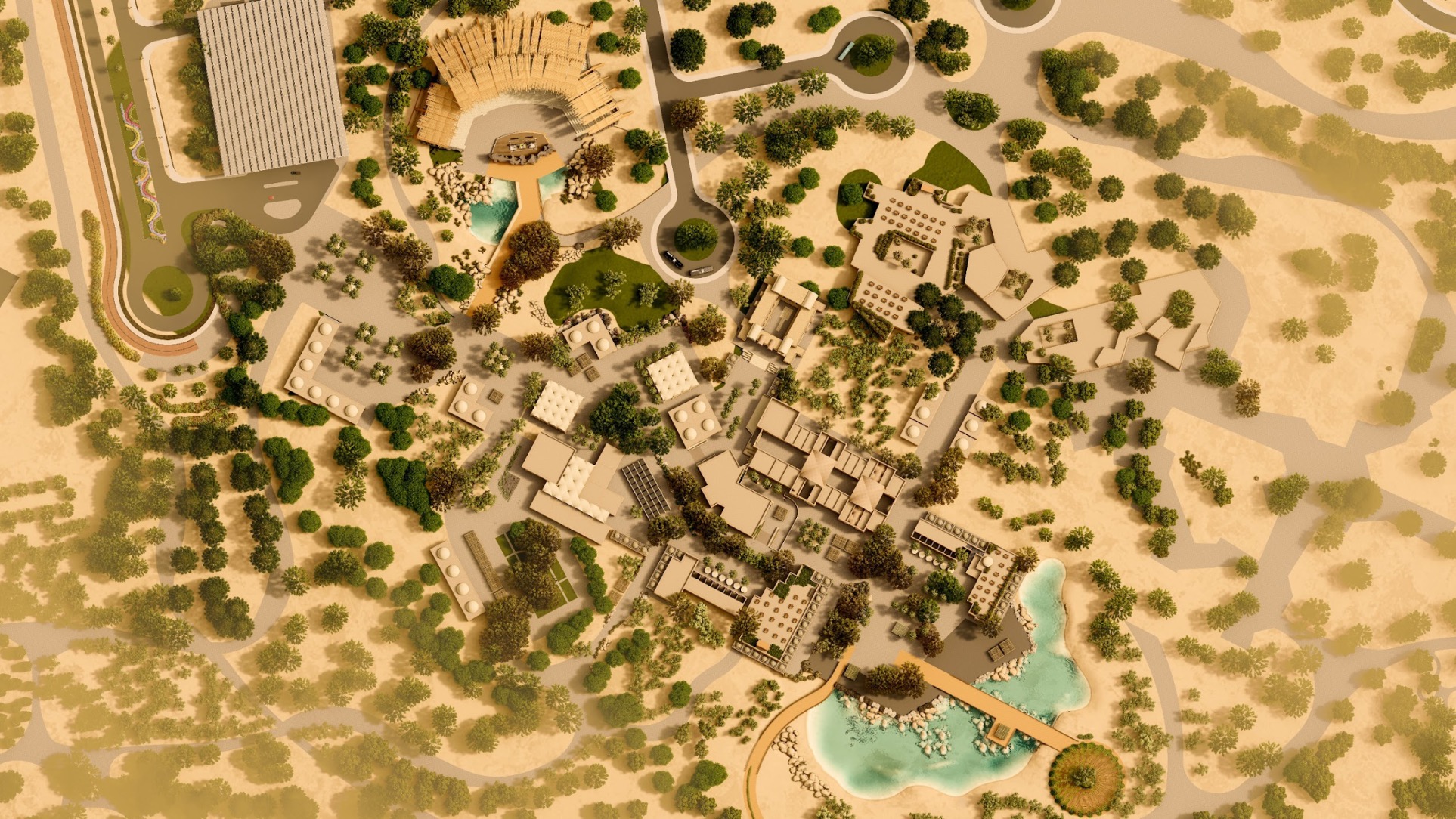
The plan outlines a six-year, $300 million project. It envisions a village offering amenities such as hotels, an amphitheater, glamping facilities, a museum, and hospitality services. The plan also includes a designated area for spiritual ceremonies, aiming to further attract pilgrims.
“The aim is to create a world-class destination for religious tourism,” explained Kamel Mahadin, the main architect behind the designs. “The place will be an educational and historically significant Christian pilgrimage site.”
This upsurge of interest coincides with a significant decline in the Christian population in the Arab world. In countries such as Syria and Iraq, ongoing conflicts have had a detrimental impact on Christian communities. In other countries, like Jordan, the challenging economic conditions and the allure of better opportunities elsewhere have played a role in the decreasing numbers.
During the interview with CNN, King Abdullah expressed concern about the potential consequences of the declining numbers: “If we don’t have any Christians in the region, I think that is a disaster for all of us. They are part of our past, they are part of our present, and they must be part of our future.”
Challenges and conservation
Kamel Mahadin’s office in Amman is filled with posters, notebooks, and digitized models of the baptism site plans. He says he drew inspiration from ancient cities like Bethlehem, Jerusalem, and Karak in Jordan, incorporating elements from these historical locations into his designs.
Together with his son and fellow architect Yazan, he still frequently visits the baptism site and makes presentations to visitors and high-level officials. Seated on his desk, Kamel revealed a collection of colored sketches he made depicting native plants, flora, and wildlife that characterizes the baptism site and surrounding area.

The project includes the creation of agricultural parks, a bird sanctuary, and shops and farms that will offer visitors a taste of local cuisine. It will also showcase vegetation of religious importance, such as palm and olive trees.
“We’re not here to uproot anything,” said Yazan. “The plan will add to the native vegetation and create a sustainable ecosystem.” He noted that between 60% and 70% of the land will be designated as a farm development area. The project, adjacent to the baptism site itself, prioritizes sustainable practices, highlighting the importance of water recycling and integrating solar panels to harness renewable energy.
While many have applauded the proposal, there are concerns that overcommercialization and infrastructure development could potentially compromise the site’s spiritual and historical ambiance. But Jordanian authorities and architects argue that the final design of the development is both environmentally friendly and will have the infrastructure needed to support 1 million pilgrims and tourists a year.
“The overall theme and feel is going back 2,000 years in time,” said Samir Murad, a former Jordanian labor minister who is now chairman of the board of trustees of the baptism site development zone. The project, he said, will respect the historical significance of the place and incorporate earth-tone colors and white domes , drawing inspiration from biblical references: “It will allow visitors to feel the wilderness, spirituality, and offer an opportunity for reflection.” He added that the development would include trails of up to three miles, a botanical garden, and tree houses.
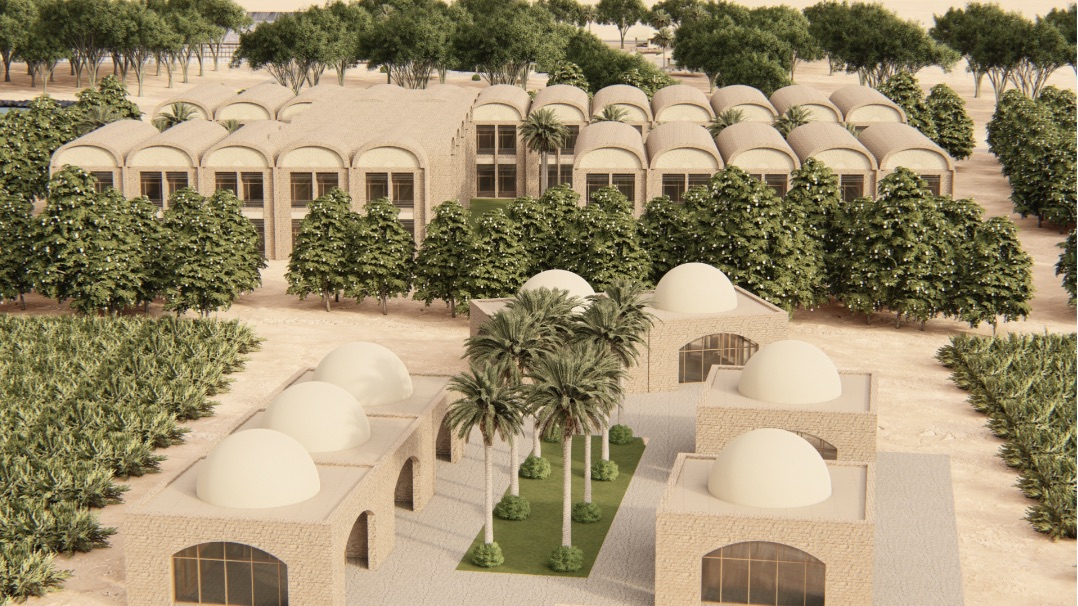
The concept aims to create a two- to three-hour visit that encourages people to engage with the locals and consider staying longer, explained Murad. The plan, if implemented, would revitalize the area and address the urgent need for job creation in the local community, which is suffering from high unemployment rates. Nationwide, nearly half of Jordanian youth are unemployed , and almost a quarter of the country’s population lives below the poverty line.
A board and an advisory committee that includes experts and stakeholders have been assembled to oversee the project’s implementation and decision-making process. The initial phase centers around government-funded infrastructure development for drainage, water, and electricity. Subsequently, the project will seek funding from a sustainable development fund in collaboration with the United Nations. Funds will also be sought from philanthropists and through investment opportunities such as land leases and revenue sharing. For this year, members are hoping to begin with farming and, by next spring, with glamping facilities, according to Samir Badran.
However, both the master plan architects and committee members harbor concerns about the project, primarily focusing on the daunting challenge of raising sufficient funding and the practical difficulties of implementation, including how to accommodate five times the current number of visitors to the site. But the project’s fate is not solely dictated by financial constraints and logistical hurdles; political dynamics and environmental considerations also loom large.
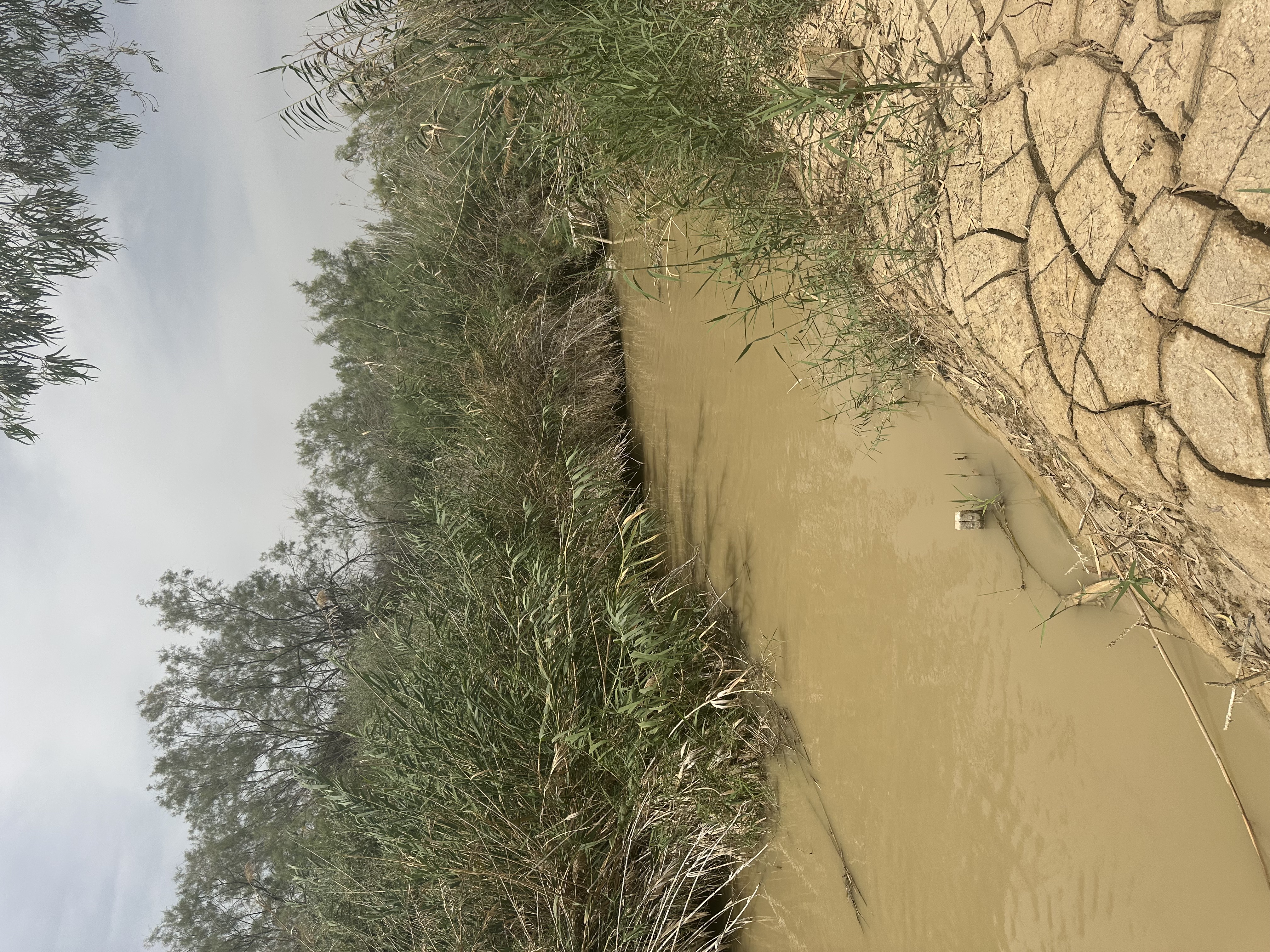
Evident along the parched river’s edge were deep dry creases etched into the sand, highlighting the arid conditions. The level of the Dead Sea has been dropping by one meter each year, causing sinkholes and other major problems for the agricultural sector. The continuous diversion of water from the Jordan River is contributing to its contraction, which is worsened still further by climate change and rising temperatures.
Today, the Jordan River’s flow is less than 10% of its historic average. Around 37% of Jordan’s water supply comes from surface water resources, primarily the Jordan, Zarqa, and Yarmouk rivers. Jordan’s access to these rivers is being impacted by the lack of regional environmental cooperation and the diversion and over-pumping conducted by Israel and Syria , leading to the rivers’ depletion.
Jordanians, Palestinians, and Israelis have previously discussed a mega-project to build a canal from the Red Sea to feed the Dead Sea. The surface of the Dead Sea is 430 meters below sea level, so the project could also exploit this difference in elevation to generate electricity. After being talked about for years, an agreement on the canal was signed in 2013 with the aim of helping to alleviate Jordan’s severe water shortage while helping to replenish the fast-shrinking Dead Sea . Ultimately, however, the project was abandoned due to bureaucratic difficulties, financing challenges, and environmental objections.
Elias Salameh, a hydrologist and leading expert on water in Jordan, points out that the severity of water scarcity and climate change is compelling regional countries to initiate fresh and increasingly urgent discussions regarding strategies to protect the Dead Sea and, consequently, the Jordan River. “All parties involved, including the Jordanians, Palestinians, and Israelis, have much at stake in the face of the potential loss of the Dead Sea and the water shortage challenges we are facing.”
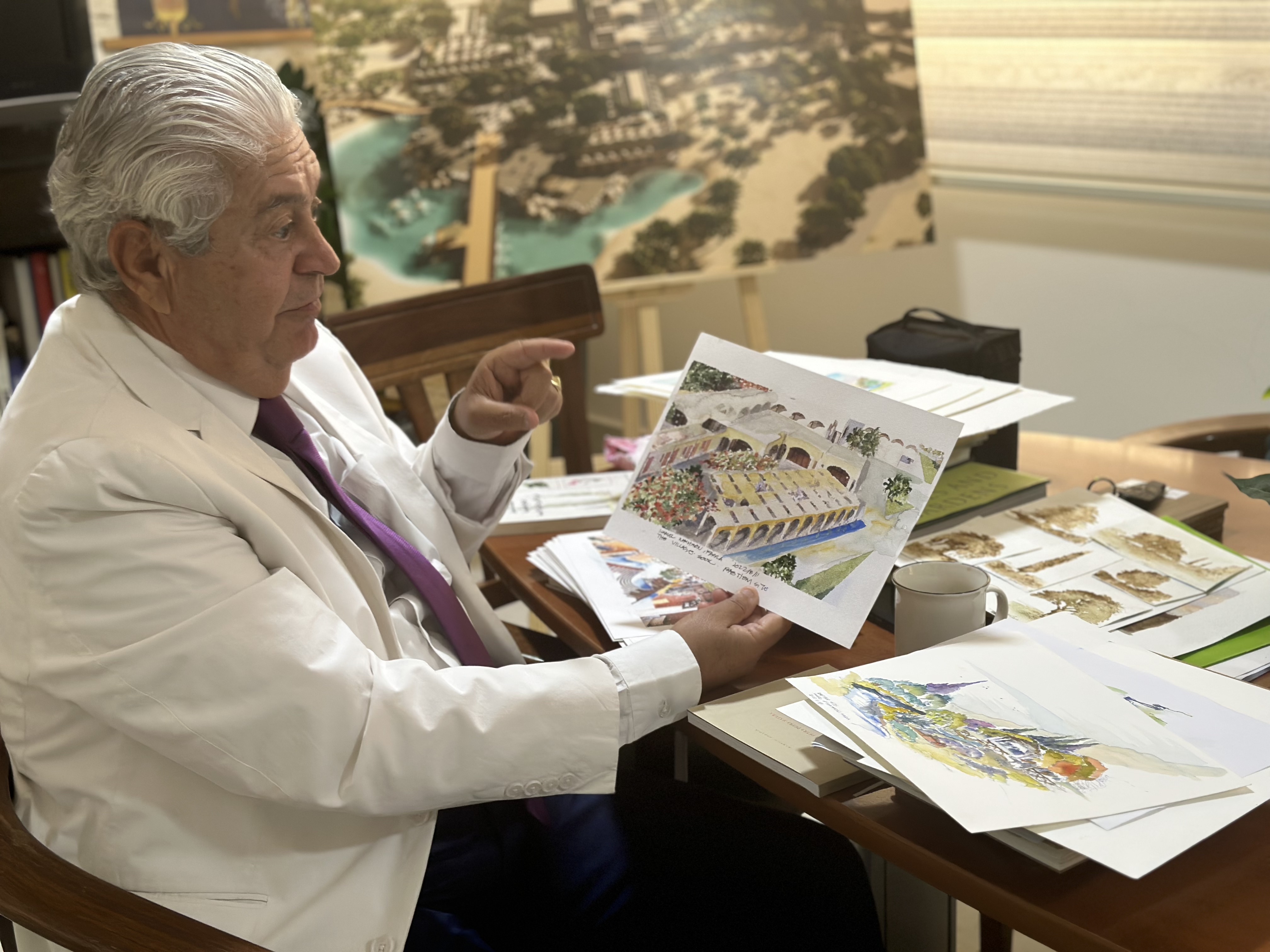
In the Mahadins’ office, meanwhile, Kamel carefully sifts through the papers on his desk. He uncovers some conceptual watercolor paintings from his pile of sketches, showcasing the pilgrimage village, path walk, bazaar, and museum. “Our vision,” he said, “is that this is the lowest point on Earth, yet it’s closest to God.”
Rana F. Sweis is a freelance journalist covering political, social, and refugee issues in the Middle East. She is the author of Voices of Jordan (Hurst Co.), a nonfiction book about modern-day life in Jordan. She holds an MA from George Washington University’s Graduate School of Political Management.
Main photo courtesy of the author.
The Middle East Institute (MEI) is an independent, non-partisan, non-for-profit, educational organization. It does not engage in advocacy and its scholars’ opinions are their own. MEI welcomes financial donations, but retains sole editorial control over its work and its publications reflect only the authors’ views. For a listing of MEI donors, please click her e .
The Media Line Stands Out
Fighting The War of Words
As a teaching news agency , it's about facts first, stories with context, always sourced, fair, inclusive of all narratives.
We don't advocate!
Our stories don’t opinionate.
Just journalism done right. Wishing those celebrating a Happy Passover.

- Personalize
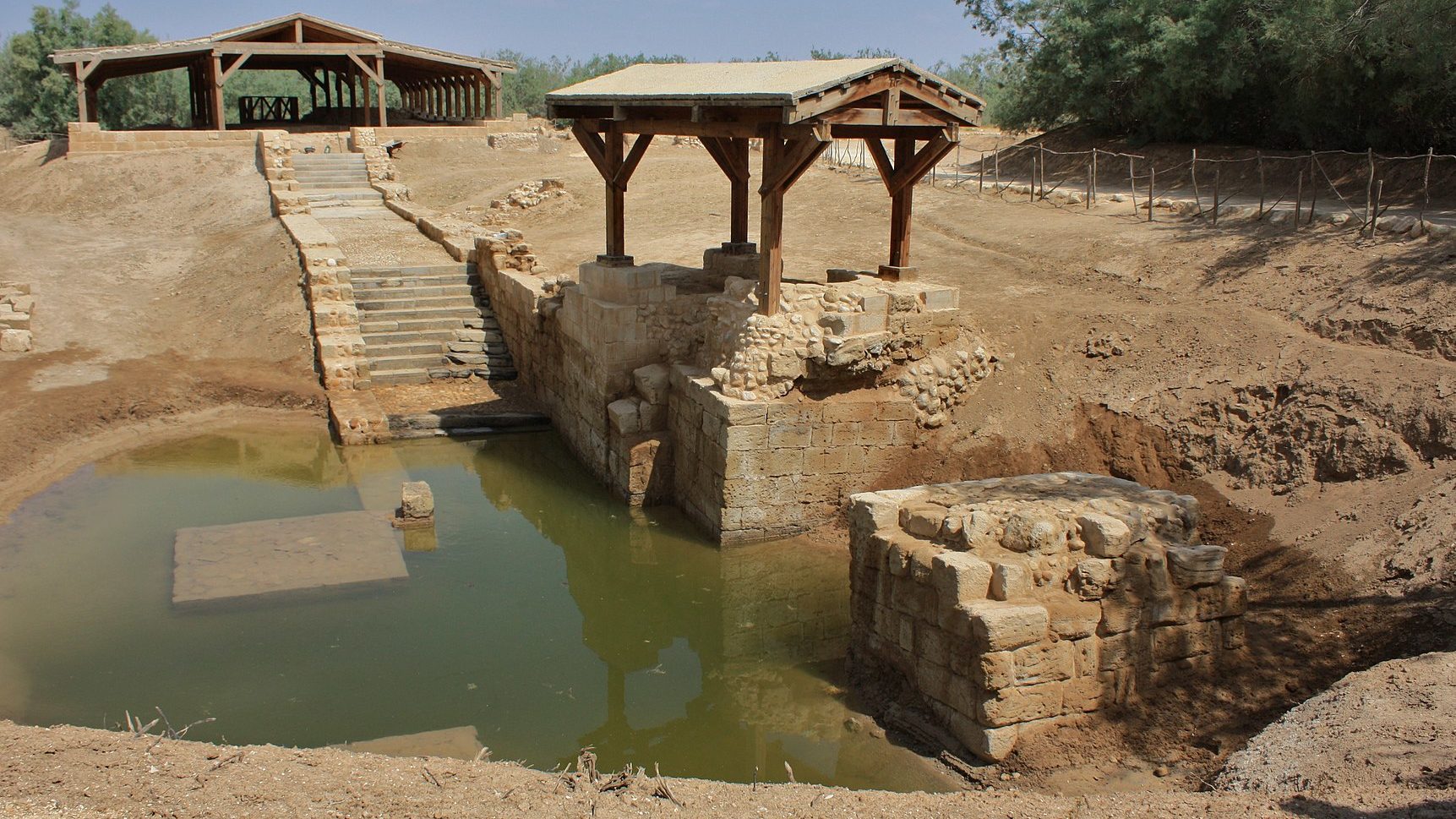
Middle East Looking Forward to More Religious Tourism in Post-Pandemic Era
Egypt, Jordan and Israel are busy preparing for the future, investing significant funds and efforts into improving important religious and heritage sites.
Despite the cautious optimism expressed by many countries’ tourism ministries and tour operators throughout the region during the summer, COVID-19 remains, and the tourism sector in all of the Middle East is bleeding.
Some countries, such as Israel, are not allowing in foreign tourists in order to prevent virus variants from spreading, while others receive just a fraction of the floods of tourists they used to host just two years ago. Nevertheless, Egypt, Jordan and Israel currently are busy preparing for the future, as they invest significant funds and efforts into the improvement and refurbishment of important religious and heritage sites.
But it remains to be seen whether the Middle East will succeed in attracting faith tourism and fulfill the enormous potential of this global trend.
Repair sites and invite
Religious tourism accounts for more than half of all incoming tourism to Israel. According to the Israel Ministry of Tourism’s 2019 Inbound Tourism survey, 53.9% of all tourists were Christians, 25.6% Jewish, 2.6% other religions and 1.4% Muslims, with the remainder not expressing any religious affiliation. Some 18.8% of all incoming tourists defined their visit as a pilgrimage, with about a quarter of all tourists arriving for touring and sight-seeing.
Still, identifying religious tourism per se is becoming a tough task, as tourists often combine both leisure and visiting religious sites.
“Promoting the tourism of Christians, Muslims and Jews from all over the world to the Holy Land is one of the most important tasks in my role as Minister of Tourism. Religious tourism builds bridges between people and countries, strengthens our international and diplomatic ties, and is an important anchor for inbound tourism,” Yoel Razvozov, Israel’s minister of tourism, told The Media Line, underlining the growing importance of faith-related travel to Israeli tourism industry.
“The Ministry of Tourism will continue to invest many efforts and resources in strengthening, improving and making the significant tourist centers accessible to all religions. I am confident that on the day that tourists are allowed to enter the country, we will be able to host here, in our beautiful country, hundreds of thousands of tourists from all over the world,” Razvozov said.
“Israel has amazing beaches, but it has to keep in mind that there are beaches everywhere – in Greece, in Dubai and in Egypt. However, it’s difficult for other countries to compete with the abundance of important religious sites,” George Horesh, a veteran tour guide and an owner of the Alma-Israel travel agency, told The Media Line.
“I believe that there is a great potential for religious tourism. In fact, despite the prognosis that predicted the decline in religiosity, what is happening is just the opposite. Religiosity is on the rise in many places in the world; that’s why Israel, as well as Jordan and Egypt, are trying to attract these tourists,” he said.
Horesh believes that, in order to succeed in this task, Israel has to invest in repair and refurbishment of many important Christian sites that for years were neglected by respective Israeli governments.
“The sites in Tiberius and Capernaum need to be attended to urgently. The roads, the guest facilities, the entrance – today it just doesn’t look good. Also, the tour guides should receive better training; in my time the guides went through meticulous instruction on Christian and Muslim theology, while today the training is very short and few are really knowledgeable on these issues. To lead a group of pilgrims the guides also need to address the nuances of theology, not merely repeat the facts,” he said.
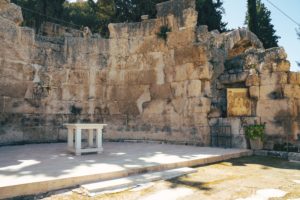
Christian visitors will be able to celebrate Mass within the ruins of the Byzantine church on the Emmaus Trail near Jerusalem. (Daniel Sonnenfeld/The Media Line)
A spokesperson at Israel’s Ministry of Tourism told The Media Line that “during the pandemic period the ministry and other bodies have invested significantly in improving religious tourism infrastructure.”
Sites that received upgrades include: Megiddo National Park; the multimedia presentation at the Saxum Visitor Center; excavations at Magdala; new accessible paths at the Garden Tomb; the Northern Ramparts walk in the Old City of Jerusalem; the excavations in the Korazim National Park; the Emmaus and the Korazim-Capernaum trails; and spaces for prayer services at national parks such as Banias, the Good Samaritan, Avdat and Kursi. An extension to the Western Wall Tunnels, exposing new archaeological excavations, also will open soon, according to the ministry.
Jordan has suffered an enormous blow to its economy due to the pandemic, leading to the closure of over 60% of the country’s travel agencies. But the kingdom did not waste any time, investing funds in restoring and promoting faith-related sites, hoping that tomorrow will be better than today.
“The Baptism Committee, which is managed by Prince ( Ghazi bin) Muhammad, is making a great effort to preserve the whole baptismal site. The DOA (Department of Antiquities) recently announced the (improvement of the) site of the cave of Zoar in the Dead Sea where Lot and his daughters lived and sought refuge after Sodom and Gomorrah,” Jordanian tour operator Sami Tawil told The Media Line.
In addition, Jordan currently is discussing the possibility of opening the Sunni Islam-majority country to Shiite pilgrims. The tombs of Jaafar, cousin of the Prophet Muhammad and brother of Caliph Ali, who is believed to be the first leader of the Shiites, has long been out of reach for Shia faith tourism.
In Egypt in recent years, the government has been investing heavily in the restoration of Christian, Muslim and Jewish holy sites. The ancient mosque Nabi Daniel in Alexandria, as well as the Shaarei Shamayim Synagogue in Cairo have been restored, and Egypt recently announced plans to restore and renovate the shrines and tombs of the Prophet Muhammad’s family across the country to support and promote religious tourism.
“Also, there are plans to generate Christian tourism to Egypt, where The Holy Family (of Jesus, Mary and Joseph) lived after fleeing King Herod’s persecution. The government is now investing in The Holy Family Trail, a path that connects many stops in Cairo, the south and Sinai,” Amr Zakaria, a Cairo-based expert and scholar, told The Media Line.
The first stops of the Holy Family Trail were completed in January. The trail will eventually include 25 stops.
Between economic needs and security concerns
While it’s clear that Middle Eastern countries are working hard to attract as many tourists as possible, even the prospect of profit sometimes is not enough to diffuse security concerns and suspicions.
Though the Abraham Accords that were signed by Israel, the United Arab Emirates and Bahrain in September 2020 included a section stating that “all peace-loving Muslims would be allowed to pray at the al-Aqsa Mosque, and the other holy sites in Jerusalem would be open to peaceful believers of all religions,” the influx of Muslim tourism to Israel is yet to be seen. In times of pandemic all forms of tourism remain very limited, and still it seems that Israel is not about to be awash in tourists from Muslim countries with whom it does not have diplomatic relations (however, Indonesian Christian tourists have been coming to Israel for many years).
In addition, there is fierce opposition to Iranian Shia faith tourism in countries such as Jordan and Egypt. Many Jordanians have expressed opposition to the idea of opening the country to Iranian tourism due to security and faith concerns.
Many Egyptians share this view. “Any tourist can visit our mosques – Al-Azhar, Al-Husseim or Al-Hakim (mosques that also have religious significance for the Shia), but Egypt never wanted Shia pilgrimages to these sites. During the days of the Muslim Brotherhood, the Iranians suggested starting religious tourism to these sites, but even then Egypt declined, for fear that they would proselytize and promote the Shia faith here,” Zakaria said.
Cooperation, cooperation, cooperation
All experts agree that cooperation between Egypt, Jordan and Israel is important in order to promote religious tourism and for the countries to enjoy an influx of tourists.
“During the ‘90s there used to be a package deal that included all three countries. I think that all of us could benefit from it,” Zakaria said.
“Jordan is part of the Holy Land, and most of the time is sold as an extension to both countries, so yes, and always there are packages that include at least two countries,” Tawil said.
“There are tour operators, mainly in source countries such as South America and India, that market multi-destination packages that include Jordan and Egypt,” according to the Israeli tourism ministry.
The work on ancient sites revered by millions of Christians, Muslims and Jews around the globe will continue, and the tour guides, the drivers, the translators and the hoteliers will patiently wait for the moment when the pandemic vanishes and the shrines, churches and mosques will be filled again with multilingual and multiethnic tourists.

Tourism in Jordan
Disclaimer: Some posts on Tourism Teacher may contain affiliate links. If you appreciate this content, you can show your support by making a purchase through these links or by buying me a coffee . Thank you for your support!
Tourism in Jordanis big business. But why is tourism so important here and how should it be managed? Read on to find out…
Tourism in Jordan
Jordan, situated in the heart of the Middle East, is a bridge between ancient civilisations and modern cultures. From the archaeological wonders of Petra to the therapeutic waters of the Dead Sea, the country unfolds as a journey through time. In this article, I will provide a concise exploration of Jordan’s tourism highlights, encapsulating its historical depth and contemporary appeal.
Geographical overview of Jordan
Jordan is a small country located in the Middle East, bordered by Saudi Arabia to the south, Iraq to the east, Syria to the north, and Israel and Palestine to the west. The country has an area of about 89,342 square kilometres (34,495 square miles) and a population of around 10 million people.
Jordan is generally divided into three main regions: the eastern desert, the central highlands, and the western rift valley. The eastern desert, which covers about two-thirds of the country, is largely uninhabited and consists of arid, rocky terrain with a few scattered oases. The central highlands, which include the capital city of Amman, are the most densely populated area of the country and are characterised by rolling hills and fertile valleys. The western rift valley is a narrow strip of land that runs along the Jordan River and includes the Dead Sea, the lowest point on earth.
Jordan’s climate is mostly arid and semi-arid, with hot summers and cool winters in the highlands, and extremely hot and dry conditions in the desert regions. Despite its harsh environment, Jordan has a rich cultural heritage and a number of important historical and archaeological sites, including the ancient city of Petra, the Roman ruins of Jerash, and the mediaeval castle of Ajloun.
Introduction to the tourism industry in Jordan
Jordan is a popular tourist destination in the Middle East, known for its rich history, stunning landscapes, and warm hospitality. The tourism industry is an important contributor to the country’s economy, accounting for approximately 14% of the country’s GDP.
One of Jordan’s most famous tourist attractions is Petra, an ancient city carved into the red rock cliffs that is over 2,000 years old. Other popular sites include the Roman ruins of Jerash, the Dead Sea, the Wadi Rum desert, and the Baptism Site of Jesus Christ at the Jordan River. Jordan is also home to a number of nature reserves, including the Dana Biosphere Reserve and the Ajloun Forest Reserve, which offer opportunities for hiking, bird-watching, and other outdoor activities.

The tourism industry in Jordan is well-developed, with a range of accommodation options, from luxury hotels to budget guesthouses. The country has an efficient transportation system, including buses and taxis, making it easy for tourists to get around. English is widely spoken in Jordan, which makes it easier for international visitors to communicate with locals.
In recent years, Jordan has focused on promoting sustainable tourism and ecotourism, with an emphasis on preserving the country’s cultural and natural heritage. The government has also taken steps to make the country more accessible to visitors, including offering visa-free entry to certain nationalities and extending the opening hours of tourist sites. Overall, Jordan’s tourism industry is a vital part of the country’s economy and offers visitors a unique and memorable travel experience.
Statistics about tourism in Jordan
Now lets highlight a few ket statistics about tourism in Jordan:
- In 2019, Jordan received around 4.5 million visitors, a 5% increase from the previous year.
- Tourism accounts for approximately 14% of Jordan’s GDP.
- The average length of stay for tourists in Jordan is around 6 nights.
- Petra, Jordan’s most famous tourist attraction, receives around 600,000 visitors per year.
- The majority of tourists to Jordan come from Europe, followed by North America and Asia.
- The tourism industry in Jordan employs around 50,000 people.
- The hotel occupancy rate in Jordan is around 55%.
- The average expenditure per tourist in Jordan is around USD $856.
- The Dead Sea, a popular tourist destination, has the lowest point on earth at 420 metres below sea level.
- In recent years, Jordan has focused on promoting sustainable tourism and ecotourism, with a goal of increasing the number of tourists while minimising the impact on the environment.
Most popular tourist attractions in Jordan
Jordan is home to many famous tourist attractions that are rich in history and culture. Here are some of the most popular tourist attractions in Jordan:
- Petra: Petra is Jordan’s most famous tourist attraction and a UNESCO World Heritage Site. The ancient city, which dates back to the 3rd century BC, is carved into sandstone cliffs and features temples, tombs, and amphitheatres.
- Dead Sea: The Dead Sea is a saltwater lake that is located at the lowest point on earth. Visitors come to float in the salty water and enjoy the therapeutic benefits of the mineral-rich mud.
- Wadi Rum: Wadi Rum is a desert valley that is known for its red sandstone formations and scenic landscapes. Visitors can take a jeep or camel tour to explore the area or go rock climbing or hiking.
- Jerash: Jerash is an ancient Roman city that is located in northern Jordan. The ruins include a theatre, temples, and a colonnaded street, all of which provide a glimpse into the life of ancient Romans.
- Amman Citadel: The Amman Citadel is an ancient fortress that is located in the heart of Amman, Jordan’s capital city. The site features Roman, Byzantine, and Islamic ruins and offers panoramic views of the city.
- Aqaba: Aqaba is Jordan’s only coastal city and is located on the Red Sea. Visitors come for the sandy beaches, water sports, and coral reefs.
- Madaba: Madaba is a small town that is famous for its mosaics, including a map of the Holy Land that dates back to the 6th century AD.
- Dana Biosphere Reserve: The Dana Biosphere Reserve is a nature reserve that is located in southern Jordan. The reserve is home to a variety of flora and fauna and offers hiking and camping opportunities.
- Ajloun Castle: Ajloun Castle is a mediaeval fortress that is located in northern Jordan. The castle was built in the 12th century and offers stunning views of the surrounding countryside.
- The Baptism Site of Jesus Christ: The Baptism Site of Jesus Christ is located on the Jordan River and is believed to be the site where Jesus was baptised. The site features churches, monasteries, and a baptismal pool.

Most popular types of tourism in Jordan
Jordan offers a diverse range of tourism opportunities, catering to different interests and preferences. Here are some of the most popular types of tourism in Jordan:
- Cultural tourism: Jordan is home to many ancient and historic sites that attract tourists interested in learning about the country’s rich history and culture. The ancient city of Petra, the Roman ruins of Jerash, and the biblical sites of Mount Nebo and Bethany Beyond the Jordan are just a few examples.
- Adventure tourism: Jordan’s natural landscapes, including the desert valleys of Wadi Rum and the mountains of the Dana Biosphere Reserve, offer plenty of opportunities for outdoor activities such as hiking, rock climbing, and camping.
- Religious tourism: Jordan is a significant destination for religious tourism, with numerous sites of biblical importance, including the Baptism Site of Jesus Christ, Mount Nebo, and Bethany Beyond the Jordan.
- Health and wellness tourism: The Dead Sea is a popular destination for health and wellness tourism due to its high mineral content and therapeutic properties. Visitors come to float in the sea, apply mud masks, and indulge in spa treatments.
- Ecotourism: Jordan has made significant efforts to promote sustainable and responsible tourism, with a focus on protecting the environment and supporting local communities. The country’s nature reserves, including the Dana Biosphere Reserve and the Azraq Wetland Reserve, offer opportunities for eco-friendly tourism activities.
- Culinary tourism: Jordan’s cuisine is a blend of traditional Arab and Mediterranean flavours and features dishes such as mansaf, falafel, and mezze. Visitors can take food tours, attend cooking classes, and sample local specialties at restaurants and markets.

- Business tourism: Jordan is also a popular destination for business tourism, with modern conference centres and hotels that host international conferences, meetings, and events.
Economic impacts of tourism in Jordan
Tourism is an essential sector of the Jordanian economy, and it has significant economic impacts on the country. Here are some of the economic impacts of tourism in Jordan:
- Employment: Tourism is a labour-intensive sector, and it generates employment opportunities for the local population. The sector employs a range of workers, including hotel staff, tour guides, drivers, and restaurant workers. According to the World Travel and Tourism Council, tourism in Jordan supported approximately 177,000 jobs in 2019, accounting for 7.9% of total employment.
- Revenue generation: Tourism is a significant source of foreign exchange earnings for Jordan. According to the World Bank, tourism receipts accounted for approximately 10% of Jordan’s GDP in 2019. In 2020, however, tourism revenue declined significantly due to the COVID-19 pandemic.
- Business opportunities: Tourism creates business opportunities for entrepreneurs in various sectors, such as food and beverage, handicrafts, transportation, and retail. Local businesses benefit from the increased demand for goods and services, particularly in tourist destinations.
- Infrastructure development: Tourism development requires the construction and improvement of infrastructure, including airports, roads, hotels, and other tourism-related facilities. Such development can benefit the local community by improving access to basic services and facilities, such as water and electricity.
- Cultural preservation: The promotion of tourism in Jordan also contributes to the preservation and conservation of the country’s cultural and historical heritage. The preservation of cultural sites and traditions is not only essential for tourism but also for the identity and pride of the local community.
- Regional development: Tourism development can also contribute to regional development by encouraging investment in less developed areas of the country. This can help to reduce regional disparities in terms of economic opportunities and access to basic services.
Overall, tourism has significant economic impacts on Jordan, and it is an important sector for the country’s development and growth.
Social impacts of tourism in Jordan
Tourism can have both positive and negative social impacts on local communities in Jordan. Here are some of the social impacts of tourism in Jordan:
- Cultural exchange: Tourism can facilitate cultural exchange and promote understanding between people of different cultures. Visitors to Jordan can learn about the country’s customs and traditions, while locals can learn about the visitors’ cultures.
- Preservation of cultural heritage: Tourism can also contribute to the preservation of cultural heritage by raising awareness and generating funds for the restoration and conservation of historical and cultural sites. The preservation of cultural heritage is essential for the identity and pride of local communities.
- Employment opportunities: Tourism creates employment opportunities for the local population, particularly in rural areas where other job opportunities may be scarce. The tourism sector employs a range of workers, including hotel staff, tour guides, drivers, and restaurant workers.
- Increased demand for goods and services: Tourism in Jordan can generate increased demand for goods and services, which can benefit local businesses and entrepreneurs. Local businesses can benefit from the increased demand for goods and services, particularly in tourist destinations.
- Socioeconomic inequalities: Tourism in Jordan can exacerbate socioeconomic inequalities if the benefits of tourism are not distributed equitably. For example, local communities may not have access to tourism-related jobs, or the benefits of tourism may be concentrated in urban areas.
- Cultural commodification: Tourism can also lead to the commodification of culture, where local traditions and customs are presented to tourists in a way that is simplified and stereotyped. This can lead to a loss of authenticity and cultural identity.
- Environmental impacts: Tourism in Jordan can also have negative environmental impacts, such as overuse of water resources, pollution, and destruction of natural habitats. These impacts can have social implications for local communities, such as reduced access to clean water and damage to the natural landscape.
Overall, tourism in Jordan can have significant social impacts on local communities, and it is essential to manage tourism development in a way that maximises the benefits while minimising the negative impacts.
Environmental impacts of tourism in Jordan
Tourism can have both positive and negative environmental impacts on Jordan’s natural resources and ecosystems. Here are some of the environmental impacts of tourism in Jordan:
- Water use: Jordan is a water-scarce country, and tourism can put pressure on the country’s already limited water resources. Hotels, restaurants, and other tourism-related facilities consume a significant amount of water, particularly in areas where water resources are already under stress.
- Land use: Tourism development requires the construction of new hotels, resorts, and other infrastructure, which can lead to the conversion of natural areas into developed land. This can have negative impacts on wildlife habitats and biodiversity.
- Waste generation: Tourism generates a significant amount of waste, including food waste, plastic waste, and wastewater. Improper waste management can lead to pollution of rivers, beaches, and other natural areas.
- Carbon emissions: Tourism-related transportation, such as flights and driving, contributes to greenhouse gas emissions, which contribute to climate change. Climate change can have significant environmental impacts, such as more frequent and severe droughts, floods, and extreme weather events.
- Environmental degradation: Tourism in Jordan can also contribute to environmental degradation, such as soil erosion, deforestation, and loss of biodiversity. Overuse of natural resources, such as water and wood, can lead to the depletion of these resources and damage to the natural landscape.
- Pressure on natural resources: Tourism in Jordan can put pressure on natural resources, such as coral reefs, beaches, and forests, particularly in areas with high tourist density. This can lead to overuse and degradation of these resources, affecting their long-term sustainability.
Overall, tourism in Jordan can have significant environmental impacts on Jordan, and it is essential to manage tourism development in a way that minimises the negative impacts while maximising the benefits. Sustainable tourism practices, such as water conservation, waste reduction, and renewable energy use, can help to mitigate the environmental impacts of tourism.
Crime and safety
Jordan is generally a safe country for tourists, with low levels of crime compared to many other countries. However, visitors should still exercise caution and take appropriate safety measures to ensure their safety.
Here are some safety tips for travellers in Jordan:
- Be aware of your surroundings: Like in any other country, it’s important to be aware of your surroundings and keep an eye on your belongings at all times. Avoid walking alone at night, especially in poorly lit areas.
- Be cautious when using public transportation: While public transportation is generally safe in Jordan, it’s still important to be cautious, especially when using buses and taxis. Make sure to only use licensed taxis and negotiate the fare in advance.
- Respect local customs and traditions: Jordan is a conservative Muslim country, and visitors should respect local customs and traditions. Dress modestly, especially when visiting religious sites, and avoid public displays of affection.
- Avoid political demonstrations: While political demonstrations are rare in Jordan, they can occur. Visitors should avoid participating in or attending political demonstrations or other large gatherings.
- Take precautions when hiking: Jordan has many beautiful hiking trails, but visitors should take appropriate safety precautions, such as staying on marked trails, carrying enough water and food, and informing someone of their itinerary.

- Carry identification and emergency contact information: Visitors should carry identification and emergency contact information at all times, including the phone number of their embassy or consulate.
- Be prepared for emergencies: Visitors should be prepared for emergencies, such as natural disasters or medical emergencies, by carrying a first aid kit and knowing the location of the nearest hospital or medical facility.
Overall, Jordan is a safe country for tourists, but visitors should still exercise caution and take appropriate safety measures to ensure their safety.
FAQs about tourism in Jordan
Now that we know a bit more about tourism in Jordan, lets answer some of the most common questions on this topic:
What is the best time of year to visit Jordan?
The best time to visit Jordan is in the spring (March to May) and fall (September to November) when the weather is mild and pleasant. Summers can be hot, with temperatures reaching up to 40°C (104°F), while winters can be cold and rainy.
Is Jordan safe for tourists?
Jordan is generally a safe country for tourists, with low levels of crime and political stability. However, visitors should still exercise caution and take appropriate safety measures.
What is the currency in Jordan?
The currency in Jordan is the Jordanian Dinar (JOD).

Do I need a visa to visit Jordan?
Visa requirements for Jordan vary depending on your nationality. Some countries are eligible for a visa on arrival, while others require a visa to be obtained in advance.
What is the official language of Jordan?
The official language of Jordan is Arabic, but English is widely spoken, especially in tourist areas.
What are the most popular tourist attractions in Jordan?
The most popular tourist attractions in Jordan include Petra, Wadi Rum, Jerash, and the Dead Sea.
What is the dress code in Jordan?
Jordan is a conservative Muslim country, and visitors should dress modestly, especially when visiting religious sites. Women should cover their shoulders and knees, and men should avoid wearing shorts.
Can I drink alcohol in Jordan?
Alcohol is legal in Jordan, but it is not widely consumed and can be expensive. Some hotels and restaurants serve alcohol, but it is not sold in supermarkets or corner stores.
What is the time zone in Jordan?
Jordan is in the Eastern European Time Zone (EET), which is 2 hours ahead of Coordinated Universal Time (UTC+2).
What is the voltage in Jordan?
The voltage in Jordan is 230V/50Hz, and the country uses Type C and Type F electrical outlets. Visitors from countries with different voltage or plug types will need to bring a voltage converter and/or adapter.
To Conclude: Tourism in Jordan
Jordan, bridging millennia of history with the vibrancy of present-day culture, stands as a testament to the enduring allure of the Middle East. As our exploration of its archaeological sites and modern hubs concludes, the multifaceted charm of Jordanian tourism emerges distinctly. For those yearning for a journey that intertwines ancient wonders with contemporary marvels, Jordan remains an evocative and unparalleled destination.
If you enjoyed this article about tourism in Jordan, I am sure you will love these too:
- 15 Incredible Tourist Attractions in Jordan + detailed guide
- An Incredible 8 Days in Jordan with Kids
- 7 Incredible Sights Along The Kings Highway Jordan
- Driving in Jordan: 10 things you NEED to know
- Tourism in Lebanon
Liked this article? Click to share!
Open Access
Religious tourism in jordan: current situation, future developments and prospects : a case study on islamic and christian holy sites, religiöser tourismus in jordanien: derzeitige situation, künftige entwicklungen und aussichten : eine fallstudie über islamische und christliche pilgerstätten.
Bader Malek

Download full text files
Export metadata
Additional services.

- Choose Language
- 14 Day Forecast
- Hourly Weather
- Local Weather News
- Arabia Weather News
- Global Weather News
- climate change
- environment
- weather science
- events and disasters
- animals and insects
- your health and weather
- Travel & Tourism
- miscellaneous
- science and technology
- astronomy and space
- facts and curiosities
- Question & Answer
- مُنبه الغُبار
- Bader System
- Weather Stations
- Elevation of Your Area
- Earthquake Observatory
What are the types of tourism in Jordan?
Weather of Arabia - Jordan is one of the most important tourist attractions not only in the Middle East, but also in the world, due to the religious and historical importance that it enjoys due to its unique geographical location, which makes it a gateway to three continents, Africa, Asia and Europe, giving it unique features that rarely meet in one country.
Hence, there are many types of tourism in Jordan to combine its land and sky with an ideal package for every tourist, between stunning beaches, religious, historical and archaeological sites, as well as therapeutic and recreational sites. In this article, we review 10 types of tourism in Jordan, according to the "Traveler's Encyclopedia" website.
Leisure Tourism
Entertainment activities in Jordan vary between amusement parks, parks and zoos, as well as cinemas and theaters, among others. Among the entertainment places in Jordan that you can visit are:
- Jubaiha Recreational City
- Ghamdan Park
- Al Hussein Gardens
- Al Wadi Water Sports Resort
- Amman Waves Aqua Park
- Adventure City
Medical Tourism
It is considered one of the most important types of tourism in Jordan, as it recently occupied the first place in the Arab world and fifth globally in this sector, thanks to what the Jordanian territory contains of several sites that have therapeutic and healing properties of mineral water pools and hot waterfalls rich in minerals and volcanic mud, and one of the most important sites of medical tourism in Jordan is:
- Hammamet Sokhna in Madaba
- Baths of Afra in Tafileh
- Barbita Baths in Tafileh
- Himma springs in Irbid
- North Shouna Baths in Irbid
- North Shona
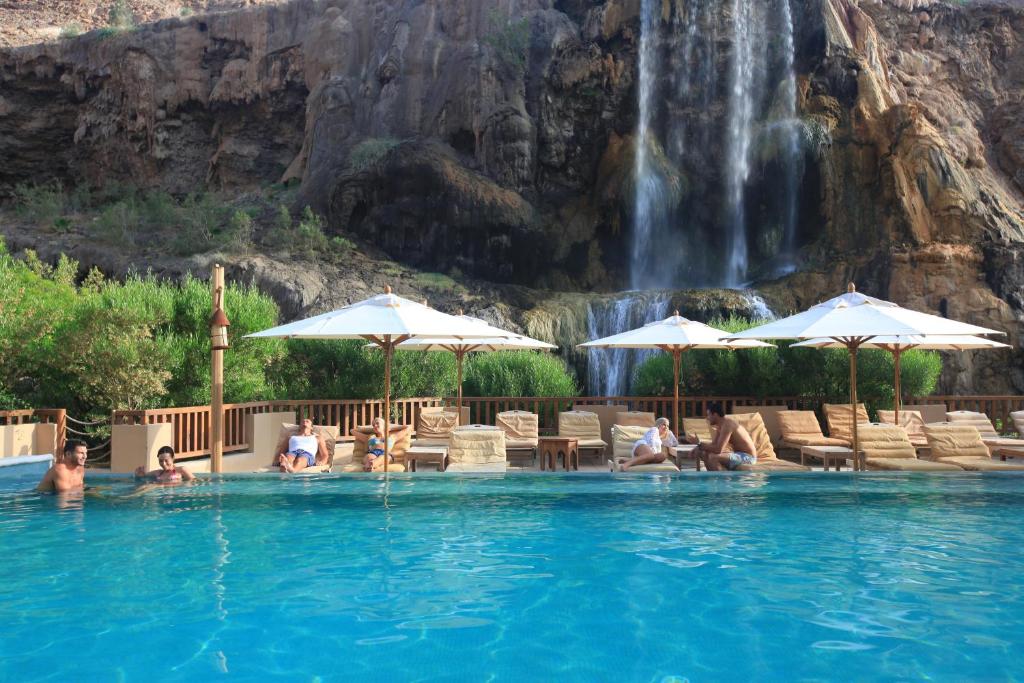
beach tourism
Jordan has wonderful beaches on both the Red Sea through the Gulf of Aqaba and the Dead Sea, and its beaches offer stunning views of the mountains and the surrounding terrain, as well as the treasures of those seas of marine creatures and coral colonies that offer a unique diving experience, in addition to related water sports, and one of the most important Those beaches in Jordan:
- Pranys Beach
- Al Aqiyah South Beach
- Hafayer Beach
- Oman tourist beach
- Al-Ghandour Beach
Shopping Tourism
Jordan is distinguished by the diversity of its shopping places, between modern shopping centers and traditional markets. The exhibits for visitors vary between high-end and luxury goods, as well as popular products and handicrafts. Among the most famous shopping places in Jordan are:
- Jabal Al Hussein market
- Galleria Mall
- Al Baraka Mall
- Abdali Mall
- Avenue Mall Sweifieh
(Abdali Mall in Amman)
Environmental tourism and nature reserves
It is one of the types of tourism in Jordan that has flourished recently, and despite the modernity of the concept of ecotourism, which was introduced to Jordan in the nineties, it soon became established as a major element in the national tourism plans, due to the fact that the territory of the Kingdom contains factors and ingredients in several regions that contribute to creating economic development The most important eco-tourism sites in Jordan are:
- Dana Reserve
- Mujib Reserve
- Azraq Water Reserve
- Shaumari Reserve
- Wadi Rum Reserve
- Ajloun Nature Reserve
- Feynan Eco Lodge
For more: Learn about the most famous nature reserves in Jordan
adventure tourism
Adventure and thrill tourism has expanded significantly in the Kingdom of Jordan, and the nature of the diverse lands and terrain has helped in the diversity of forms of that tourism, which is represented by kayaking, windsurfing, fishing, boat racing, mountain climbing and snorkeling, and among the most important places that offer forms of adventure tourism in Jordan:
- Wadi Al-Mansheya Karak
- Valley of Hidan
- Jordan Trail
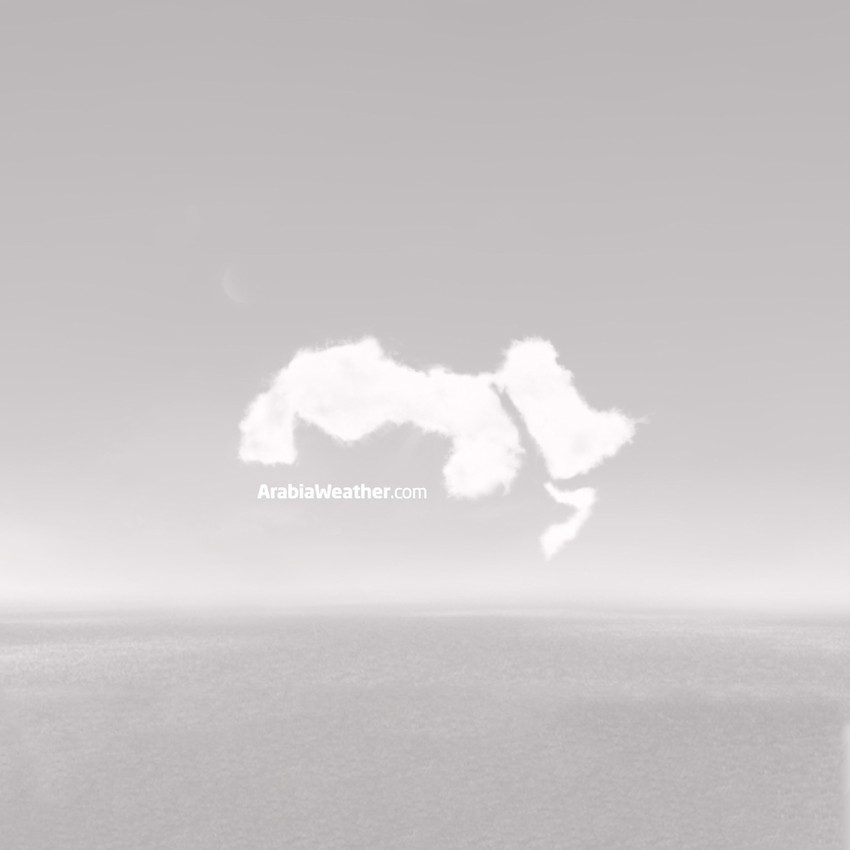
(Wadi Mujib)
Cultural tourism
It is considered one of the richest types of tourism in Jordan due to the important cultural center that this country represents.
- Roman amphitheater
- castle mountain
- Form Square
- Shabib Festival for Culture and Arts
- Jarash festival
- world book fair
- Jara market for handicrafts and folk culture
(Citadel Mountain in Amman)
Museum tourism
Jordan includes a large number of museums in each of its cities, from the capital Amman to various archaeological cities and others, which are represented in heritage and historical museums in addition to various topics. Among the most famous museums in Jordan are:
- Jordan Museum
- National Museum of Fine Arts
- Jordan Archaeological Museum
- Children museum
- Folk Costume Museum
- Umm Qais Archeology Museum
- Dar Al Saraya Museum
- Irbid Archeology Museum
- Madaba Museum
- Ancient Petra Museum
- Heritage Tale Museum
- Petra Nabatean Museum
Historical and heritage tourism
Jordan is a large open museum that contains many antiquities and historical and heritage sites that witnessed the succession of civilizations that Jordan and the entire Middle East passed through. Among the most important historical places, palaces and monuments in Jordan are:
- Jerash effects
- Kays's mother
- mother of lead
- Shobak Castle
- Qasour al-Abed, al-Mashta, al-Hallabat, al-Harana, al-Burqa and others
Religious tourism
Religious tourism is one of the most important types of tourism in Jordan since ancient times, due to the distinguished location that it enjoys between Mecca and Jerusalem, the holy city of the three monotheistic religions. Many prophets whose history is associated with Jordan were mentioned, and among the most important religious sites in Jordan:
- King Abdullah I Mosque and King Hussein Bin Talal Mosque
- The Great Husseini Mosque and the Umayyad Mosque
- baqiaoiya tree
- The shrines and shrines of the prophets and companions, such as the tomb of the Prophet Ayoub and the shrine of the Prophet Shuaib
- The site of the people of the cave located in the southeast of Oman
- Nebu mountain
If you are planning to visit Jordan, you will find in this link everything you need
Containers from a famous company contaminated with feces in France... What's the story?
Saudi Arabia | The launch of the activities of the sectarian rose festival “Qitaf 19”
Saudi Arabia/Update 11:00 pm: The dust storm affected Wadi Al-Dawasir for more than 12 hours and is moving south towards the southwest of the Kingdom, including Najran.
Saudi Arabia: The rainy situation intensified in several parts of the center and east of the Kingdom on Tuesday, accompanied by varying rains, thunderstorms, and hail.
Arabia Weather App
Download the app to receive weather notifications and more..

IMAGES
VIDEO
COMMENTS
St. George's Church. PQ9V+8MF, K. Talal St. 30, Madaba, Jordan. A short drive from Amman, the town of Madaba is home to one of Jordan's largest Christian communities and several impressive churches. Of these, the Greek Orthodox St. George's Church is the most interesting.
The land of modern day Jordan has been the site of significant events in the history of Christianity, spanning across centuries throughout the New and Old Testaments. It is because of this religious significance that sites all around Jordan have been designated as pilgrimage sites and have been visited by Pope John Paul VI, Pope John Paul II ...
Mukawir and Bethany Beyond the Jordan are two sacred sites in the kingdom that are filled with biblical and historic importance, providing visitors with a unique opportunity to experience these places. Leen Hajjar, born and raised in Amman, is JTBNA's blog editor. A recent graduate from Villanova University with a master's degree in ...
For anyone interested in the history of religion, visiting the country of Jordan is a must. Home of the Holy Land and including some of the world's oldest Christian communities, Jordan teems with breathtaking sacred sites that attract people from all over the world.From the location where J esus was baptized, according to the Gospel of John, to Herod's palace, Jordan's many well ...
Use the visitor entrance and purchase a ticket before entering the exquisite, blue-domed King Abdullah I Mosque in Amman. Remove your shoes and leave them at the doorway. Remember that this is a ...
Religious tourism in Jordan is known as visiting important and sacred religious sites for the three monotheistic religions, which are Islam, Christianity and Judaism, with the aim of enjoying the spiritual and contemplative atmosphere that enhances faith and increases the religious awareness of the traveler, as Jordan includes a large number of important and sacred religious sites, which ...
However, in modern time tourism has taken a different trend, namely visiting places rich in religious sites and those abounding with traces that reflect past historical events. Among the Middles Eastern countries which is considered as a jewel for religious and historical tourism is Jordan. This country is a conflation of faith with cultures or ...
Acquired by The Ministry of Tourism and Antiquities, the center is a great launching point for visitors arriving to Madaba. Open 7 days a week, including holidays, the visitors center is more than equipped to prepare you for your journey into the land of mosaics and religious history. Contact information/ how to book: Telephone: 00962 5 3253097
Jordan is a distinct destination for cultural and religious enrichment. There are many holy places spread across Jordan. Five sites were recognised as Christian pilgrimage sites by the Vatican in the year 2000, including the Baptism site of Jesus Christ at Bethany Beyond the Jordan in the Jordan Valley.
The purpose of this research study is to analyze Distinction of Jordan as a destination for religious tourism. This study was designed to establish a partnership between all tourism sectors in ...
In 2021, Jordan launched a five-year national tourism strategy with an emphasis on religious sites, including the Vatican-endorsed pilgrimage locations of Jesus' baptism at Bethany-beyond-the ...
A: The best Religious Tours in Jordan according to Viator travelers are: Private Day Trip of Jerusalem and Bethlehem from Amman. Private Full Trip of Madaba City Mosaics,Mount Nebo,Dead Sea & Amman Sightseeing. Jordan River Site tour from Amman. 1-Night Private Jerusalem and Bethlehem Tour from Amman.
The tourism sector in Jordan contributes approximately 20% of GDP. In 2019, over 5 million people visited Jordan; during the first quarter of 2023, more than 1.4 million tourists were recorded. ... "The aim is to create a world-class destination for religious tourism," explained Kamel Mahadin, the main architect behind the designs. "The ...
Jordan is a sovereign Arab state in the Middle East. The capital, Amman, is Jordan's most populous city as well as the country's economic, political and cultural centre. Major tourist attractions in Jordan include UNESCO World Heritage Sites such as Petra and Umm ar-Rasas, ancient cities such as Amman, Aqaba, Madaba and Jerash, the Jordan River ...
Sunni Islam is the dominant religion in Jordan.Muslims make up about 97.2% of the country's population. A few of them are Shiites.Many Shia in Jordan are refugees from Syria, Lebanon, and Iraq.. The country also boasts one of the oldest Christian communities in the world, coexisting with the rest of the population. They made up about 4.2% of the population when the country had 5 million ...
According to the Israel Ministry of Tourism's 2019 Inbound Tourism survey, 53.9% of all tourists were Christians, 25.6% Jewish, 2.6% other religions and 1.4% Muslims, with the remainder not expressing any religious affiliation. Some 18.8% of all incoming tourists defined their visit as a pilgrimage, with about a quarter of all tourists ...
Looking at the documents related to this parameter, we found different dimensions of this parameter, including religious tourist motivations [150, 151], religious tourist experiences [152 ...
2021 Report on International Religious Freedom: Jordan Office of International Religious Freedom. June 2, 2022 Download Report Translations In this section / ... to advise the government's Baptism Site Commission on its efforts to increase revenue from religiously based tourism, create jobs, preserve the country's religious heritage, and ...
The tourism industry in Jordan employs around 50,000 people. The hotel occupancy rate in Jordan is around 55%. The average expenditure per tourist in Jordan is around USD $856. The Dead Sea, a popular tourist destination, has the lowest point on earth at 420 metres below sea level.
Religious tourism is one of the main pillars of Jordan's tourism industry. In 2005 Jordan received nearly six million tourists; one million out of these six million visited the country's holy sites (according to Kevin Wright, president of the WRTA, 2008). Jordan is blessed by the presence of the holy sites that present the three monotheistic religions: Islam, Christianity and Judaism.
The purpose of this research study is to analyse the state of the religious tourism product in Jordan from three main perspectives: To present the current state of religious tourism in Jordan through studying the tourism movement in the holy sites and analysing the potentials and future prospects. The relationship between the local community and these sites will be the second perspective from ...
it is considered to be a major religious tourism center in Jordan, represented by Christian pilgrimage sites, making Jordan a major destination for tourists (Bazazo, 2012). Christian Religious Tourism Religious Tourism is a traditional form of tourism that began almost with the beginning of humanity, since ancient times it has been a cultural ...
Religious tourism. Religious tourism is one of the most important types of tourism in Jordan since ancient times, due to the distinguished location that it enjoys between Mecca and Jerusalem, the holy city of the three monotheistic religions. Many prophets whose history is associated with Jordan were mentioned, and among the most important ...